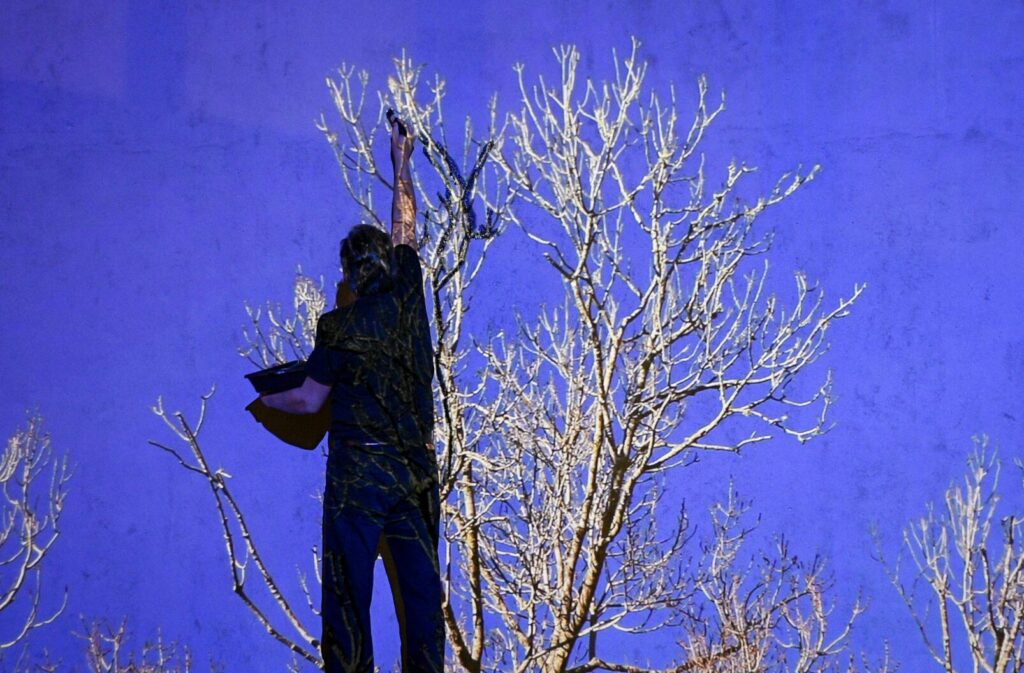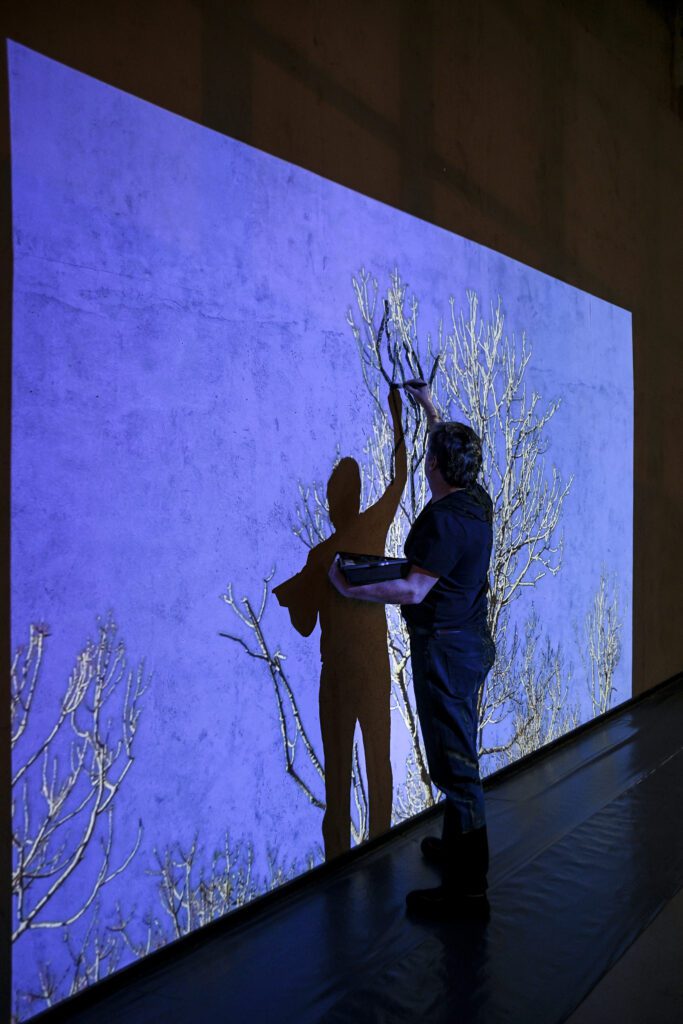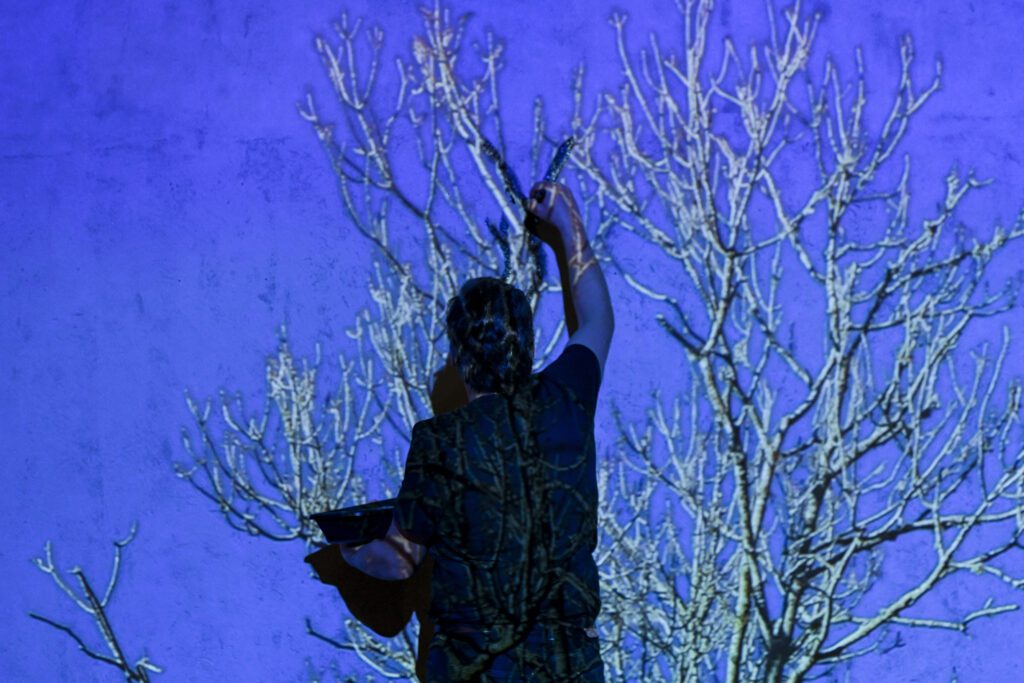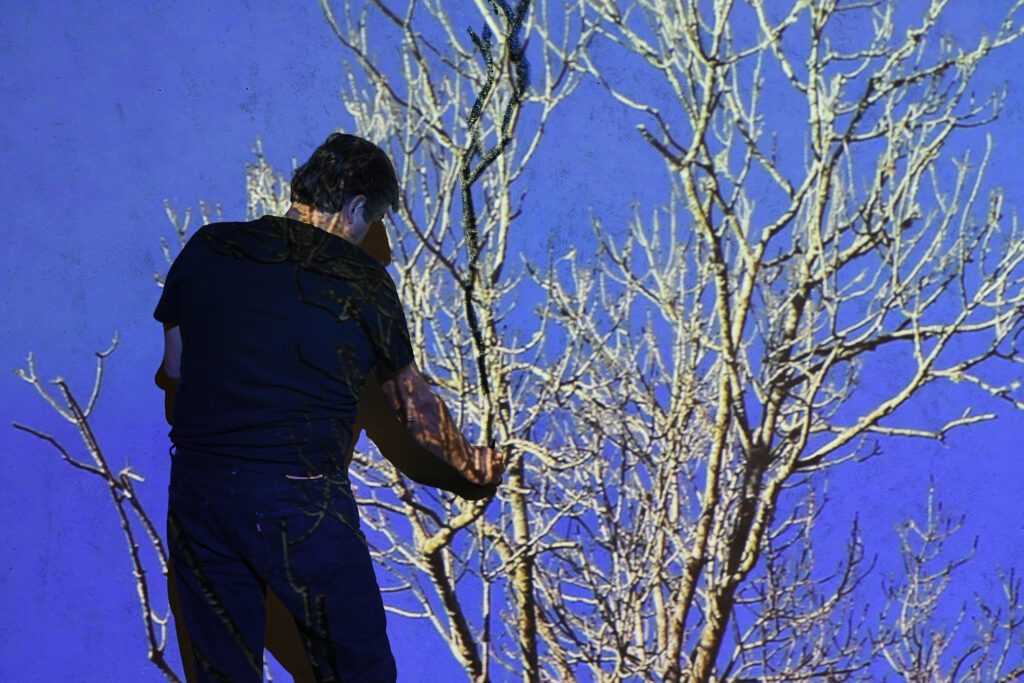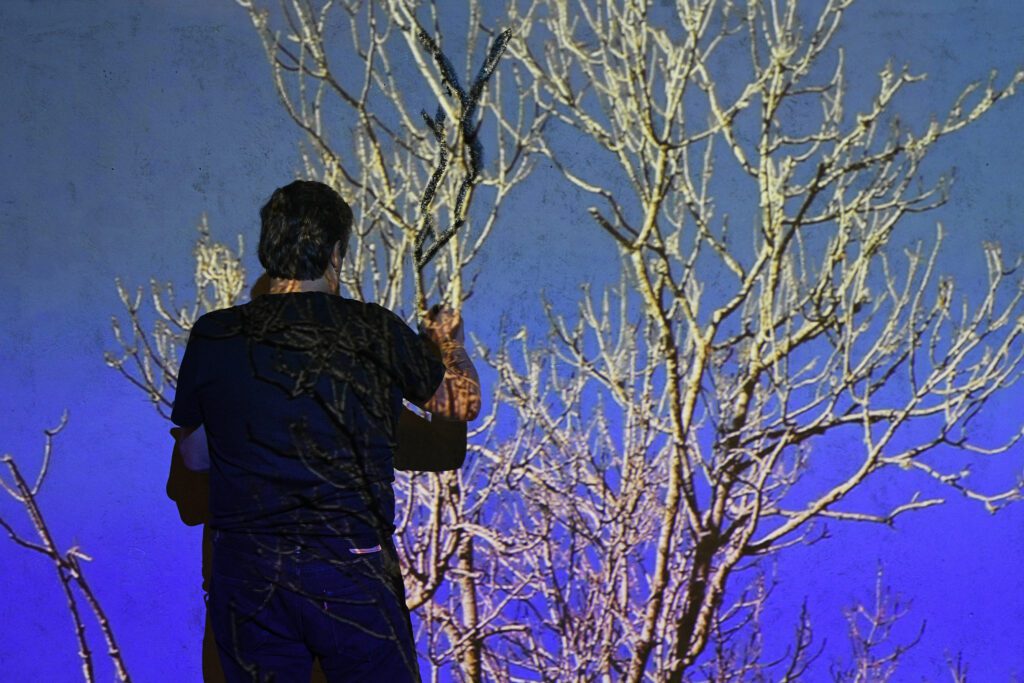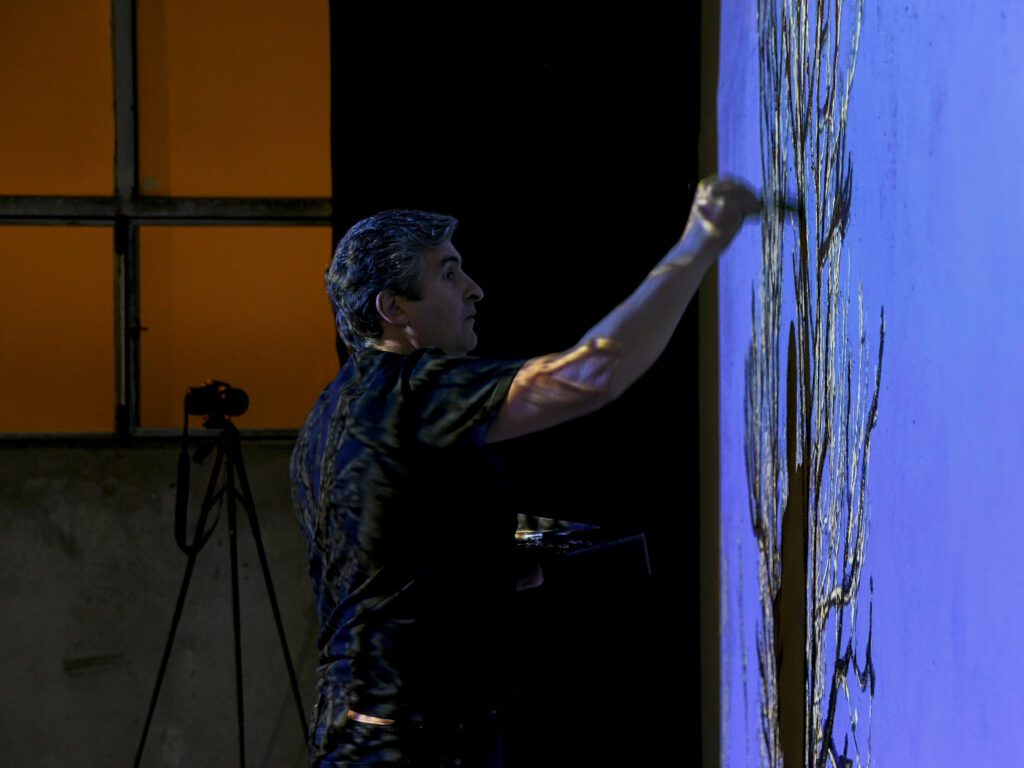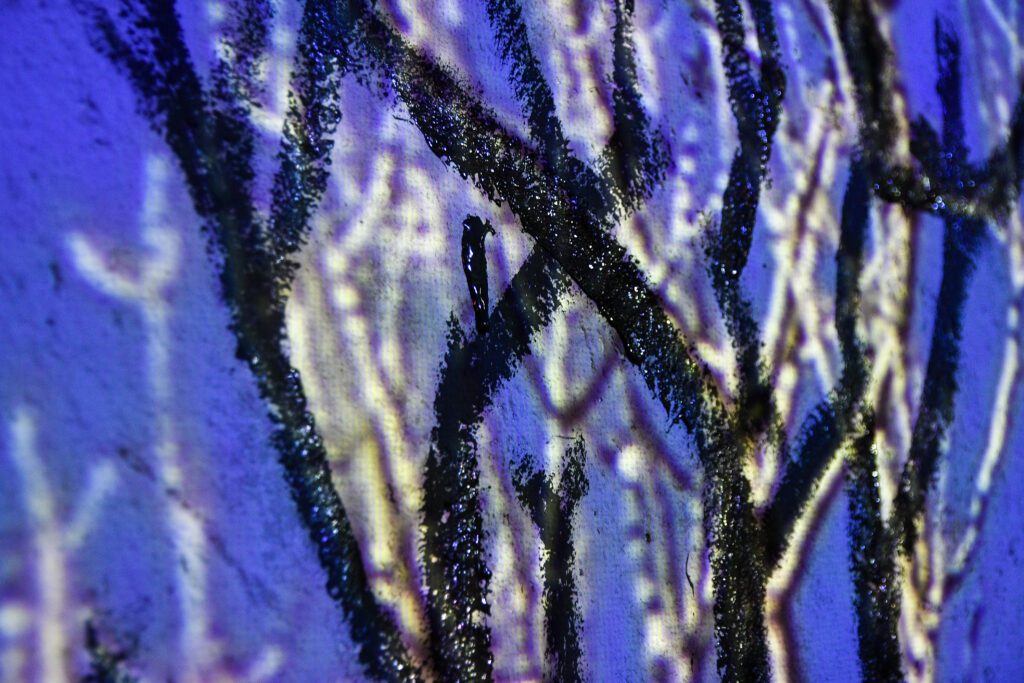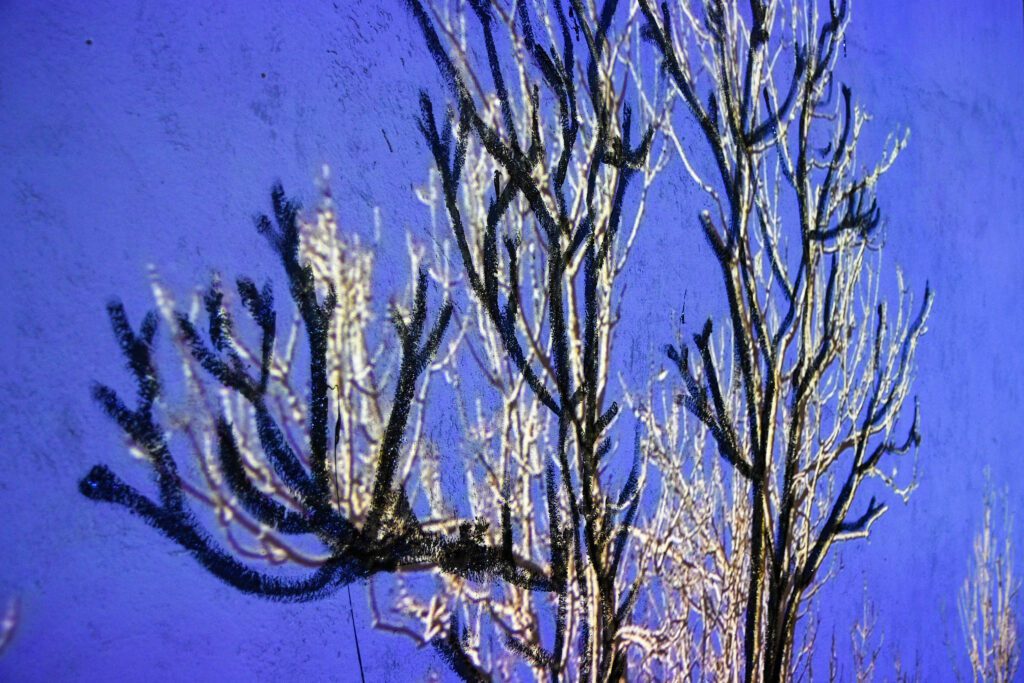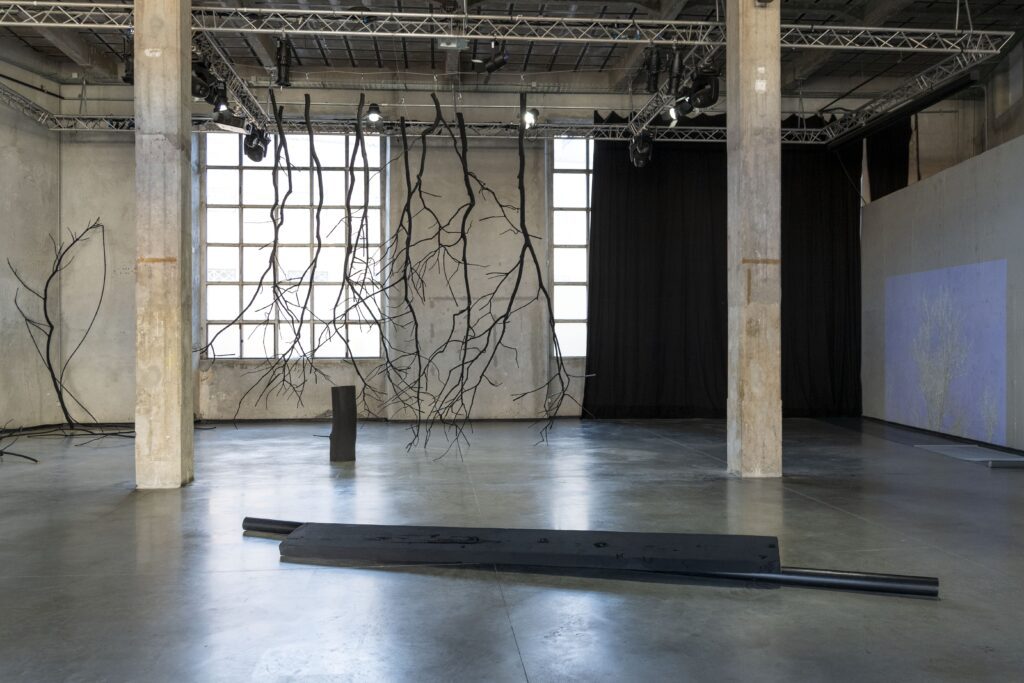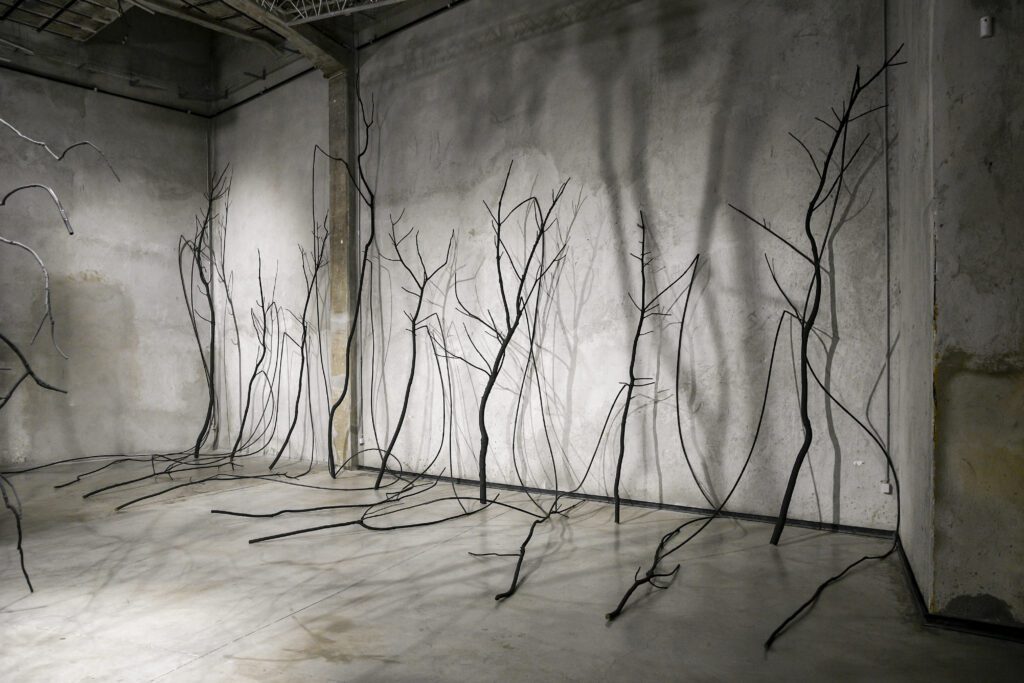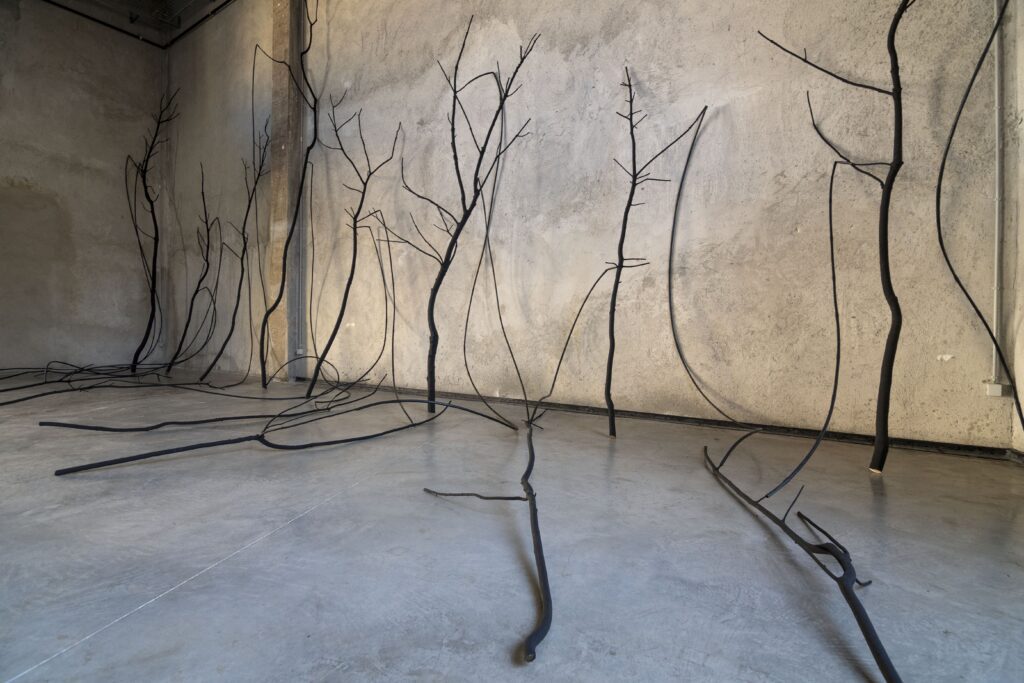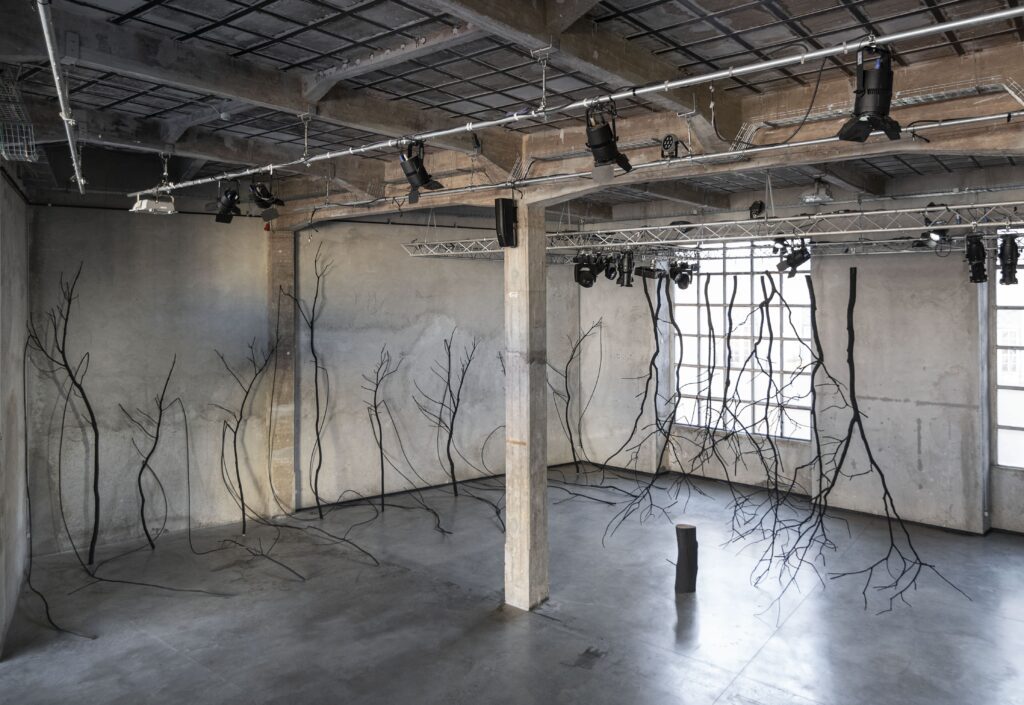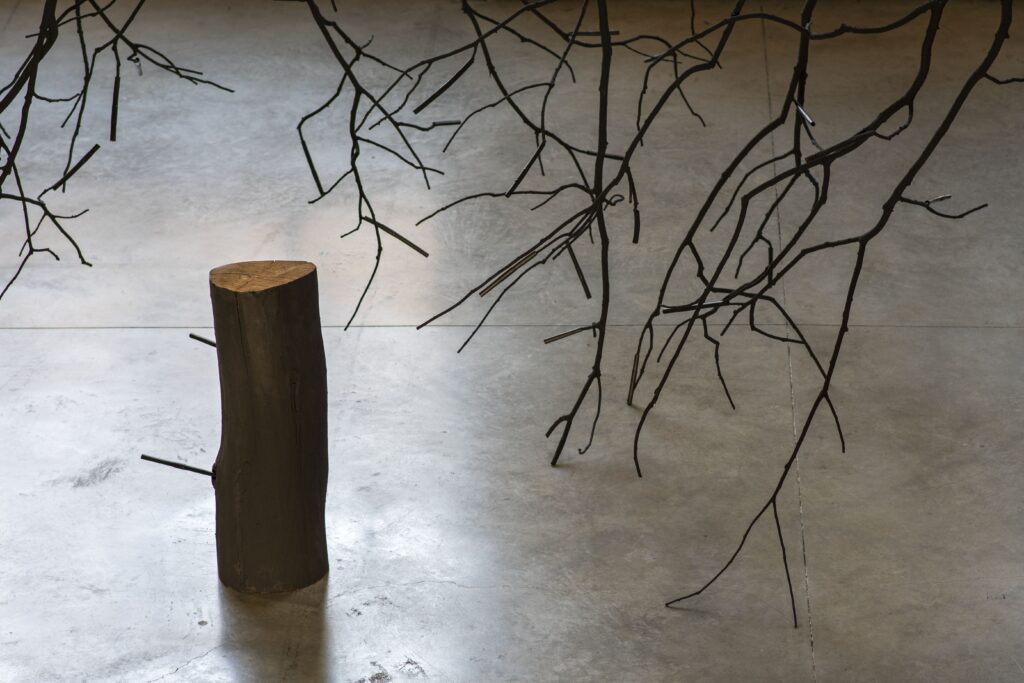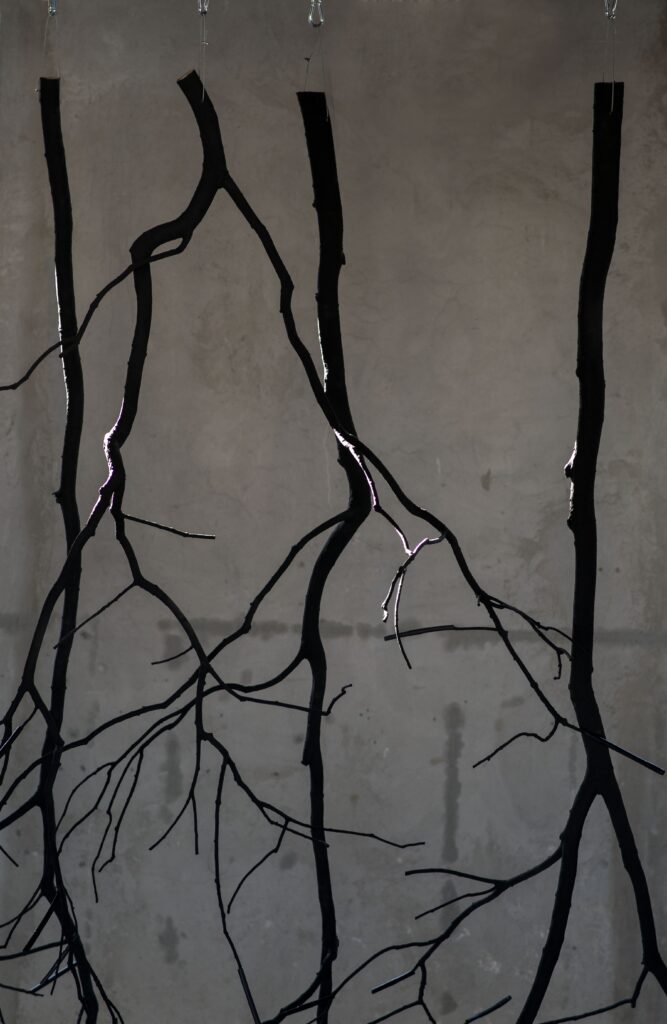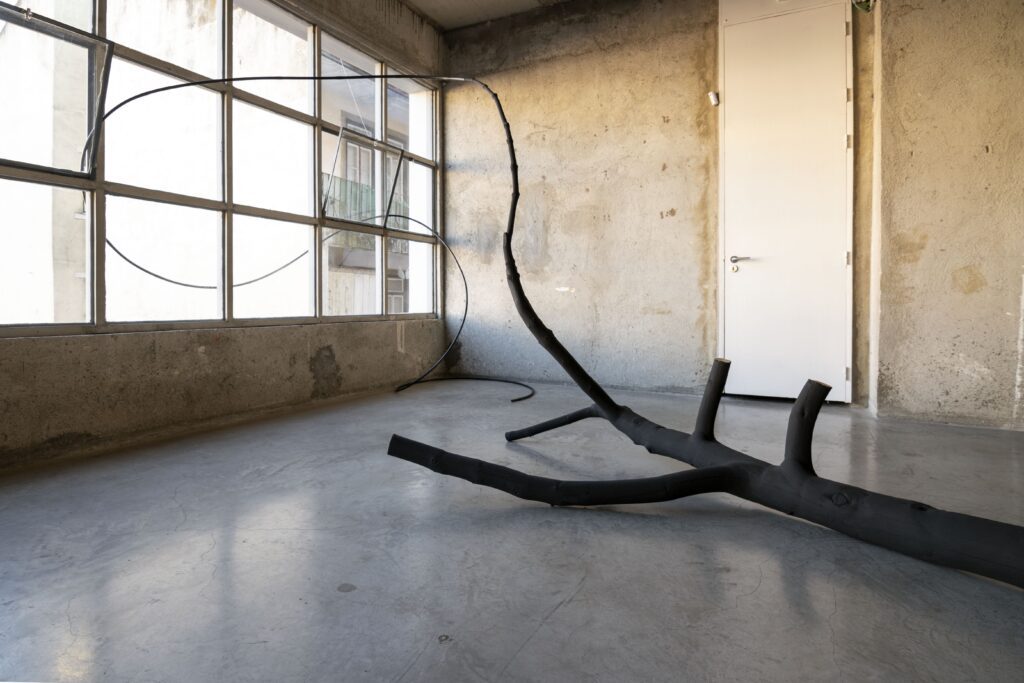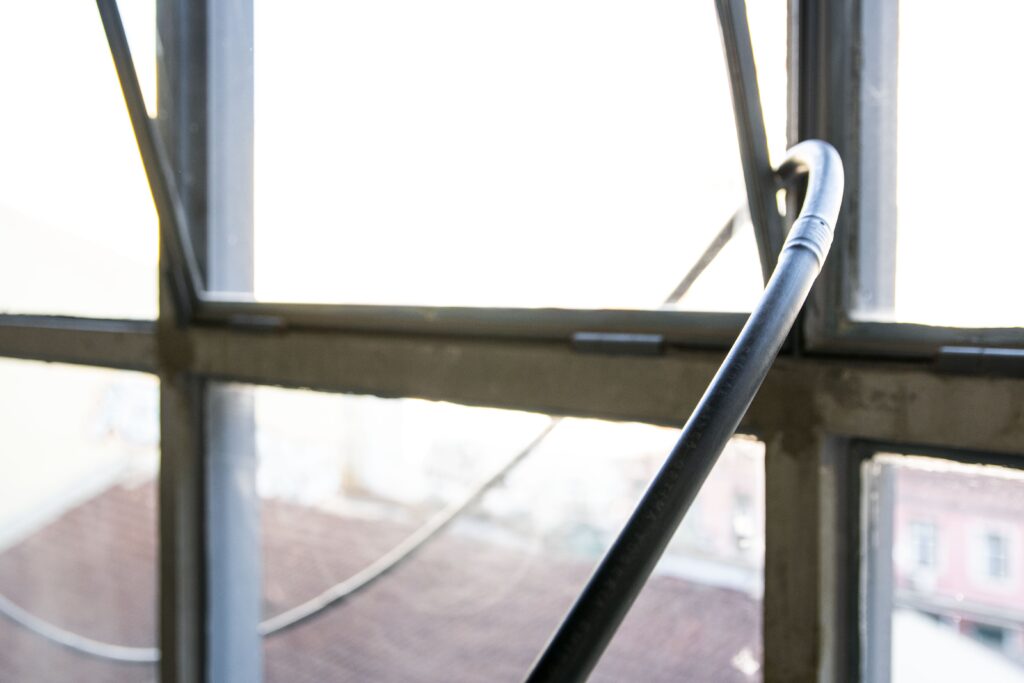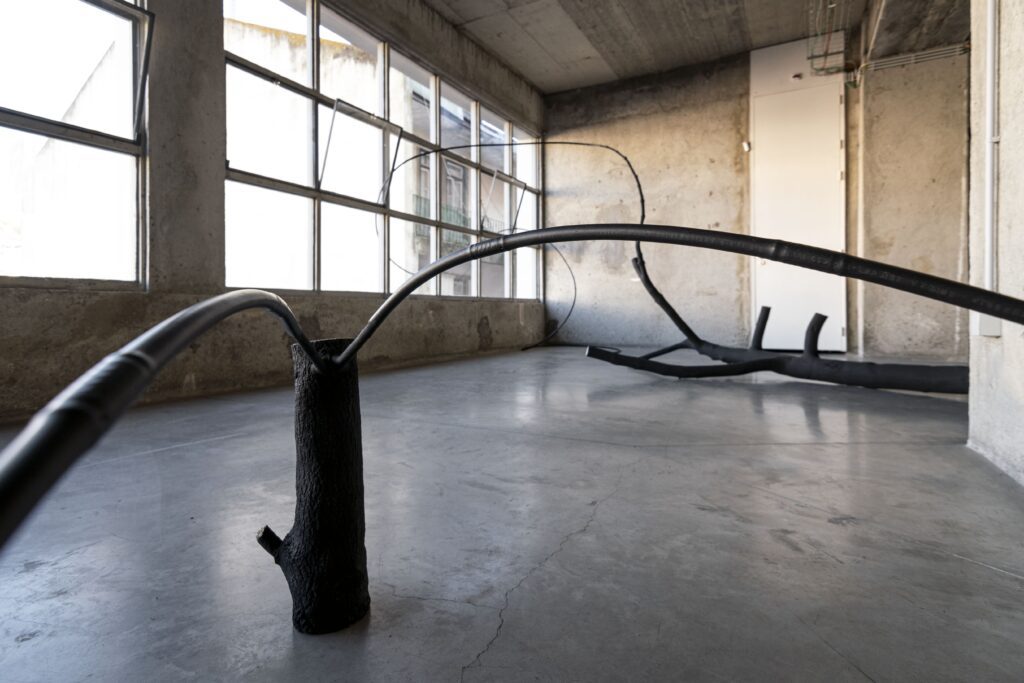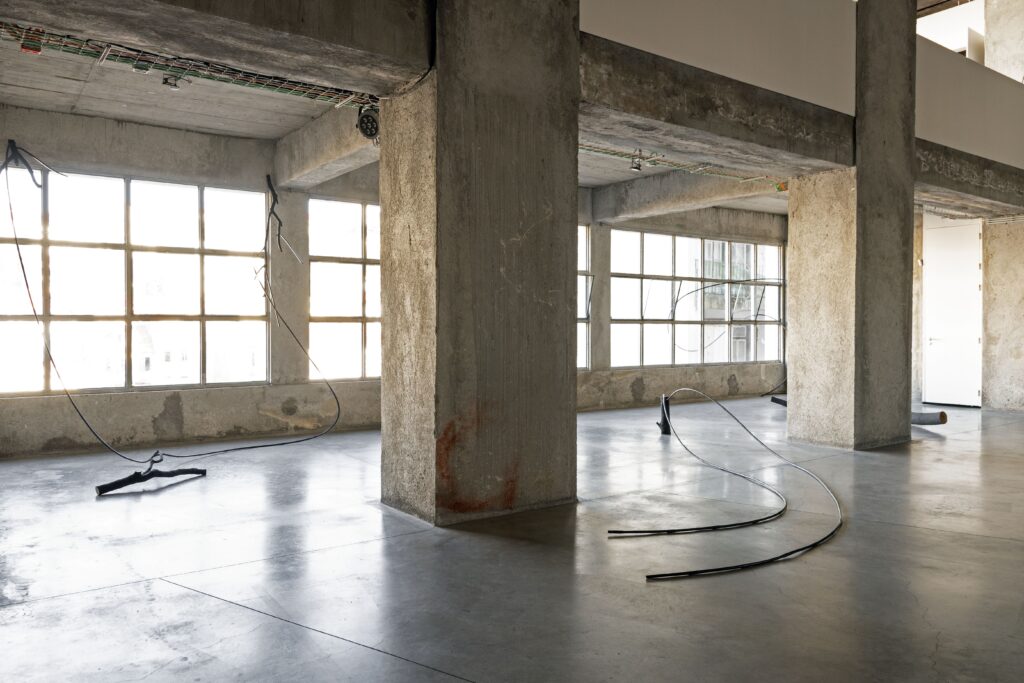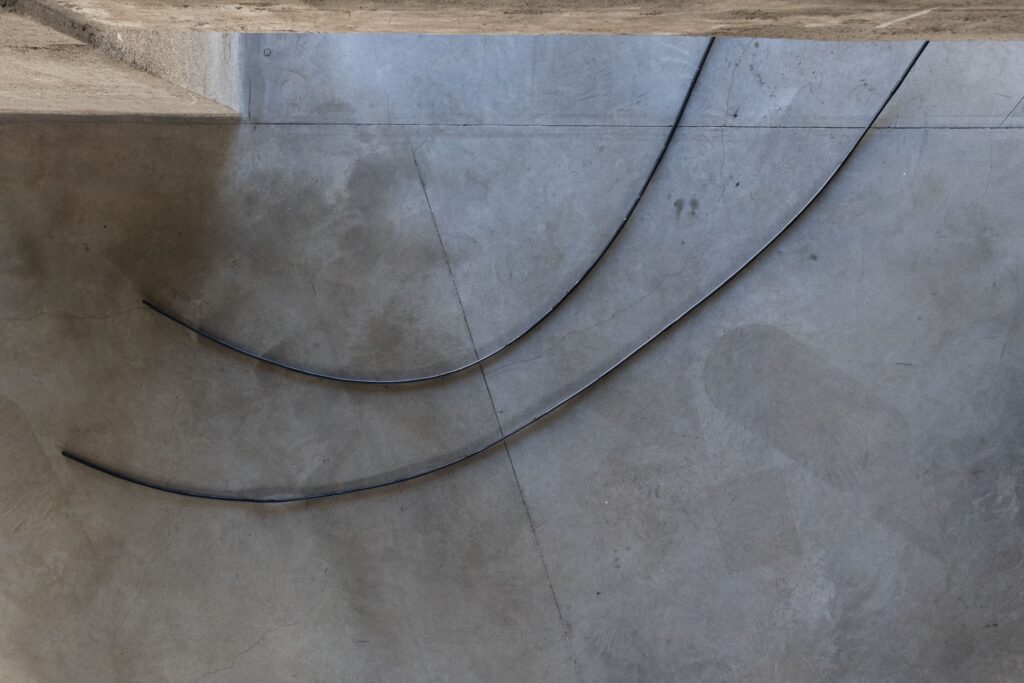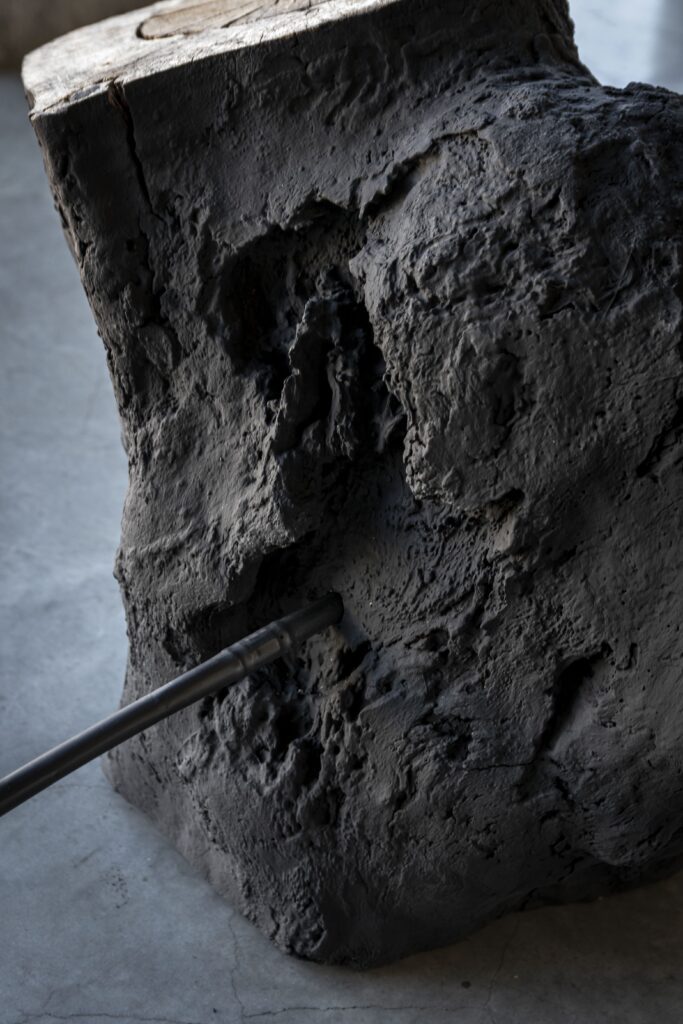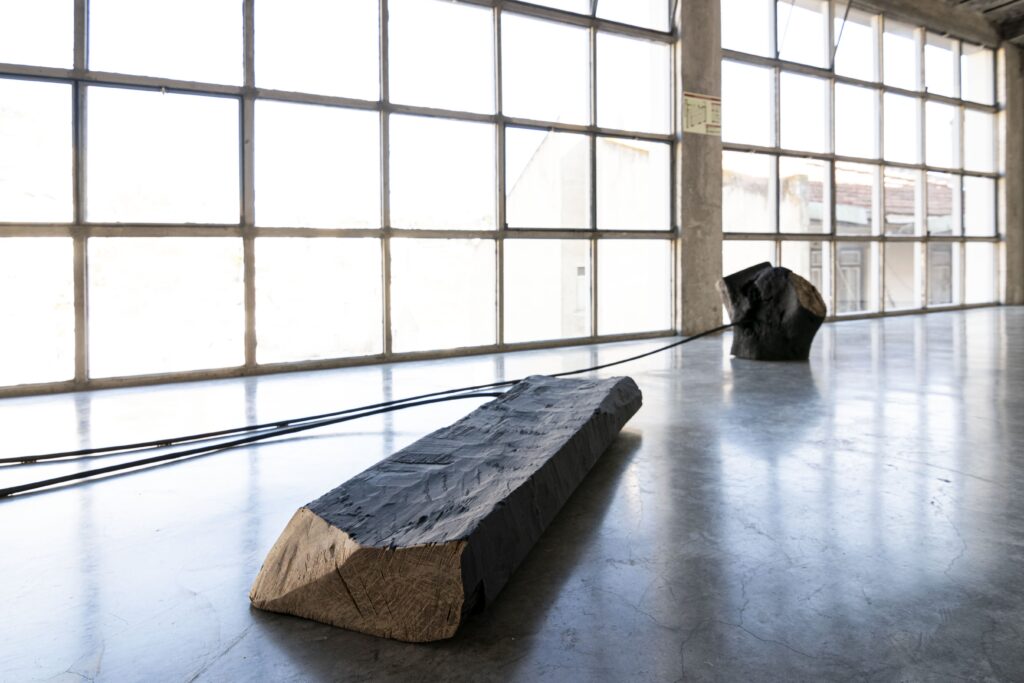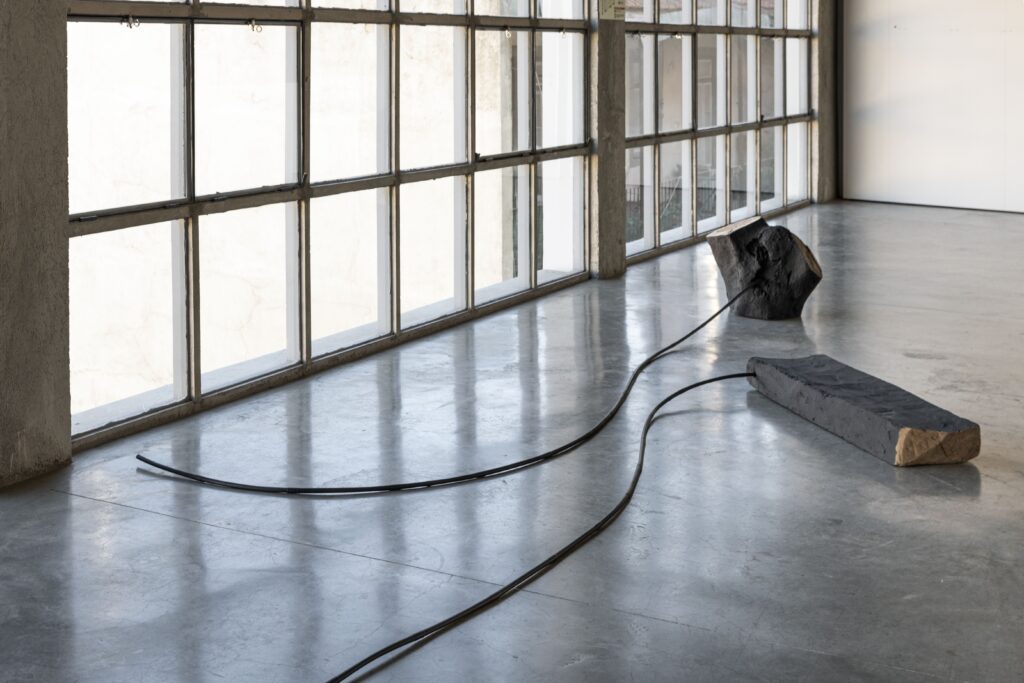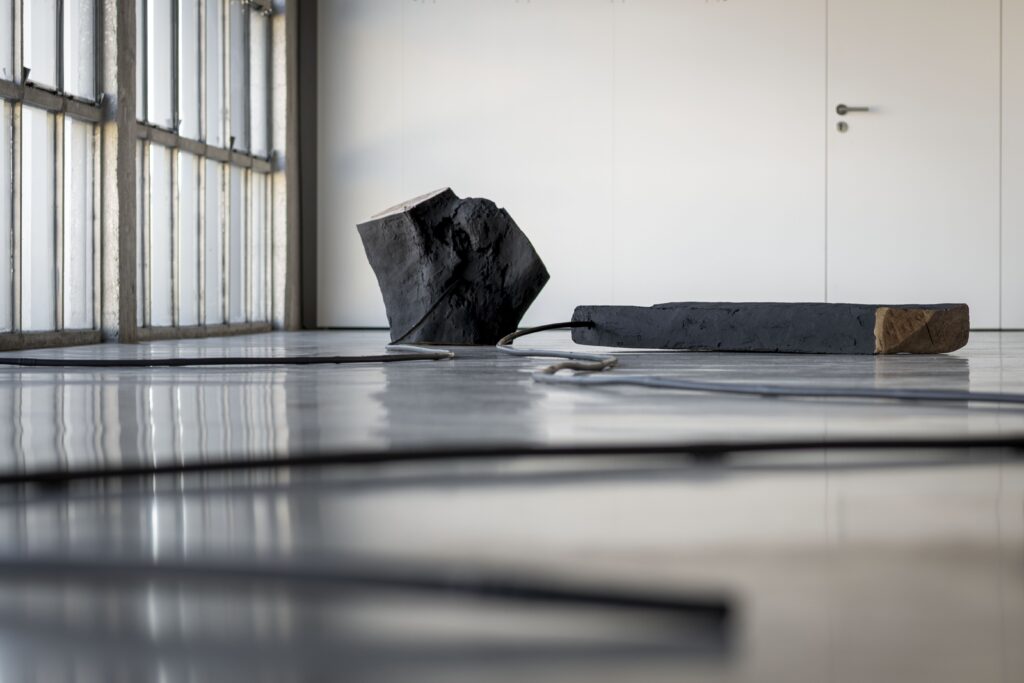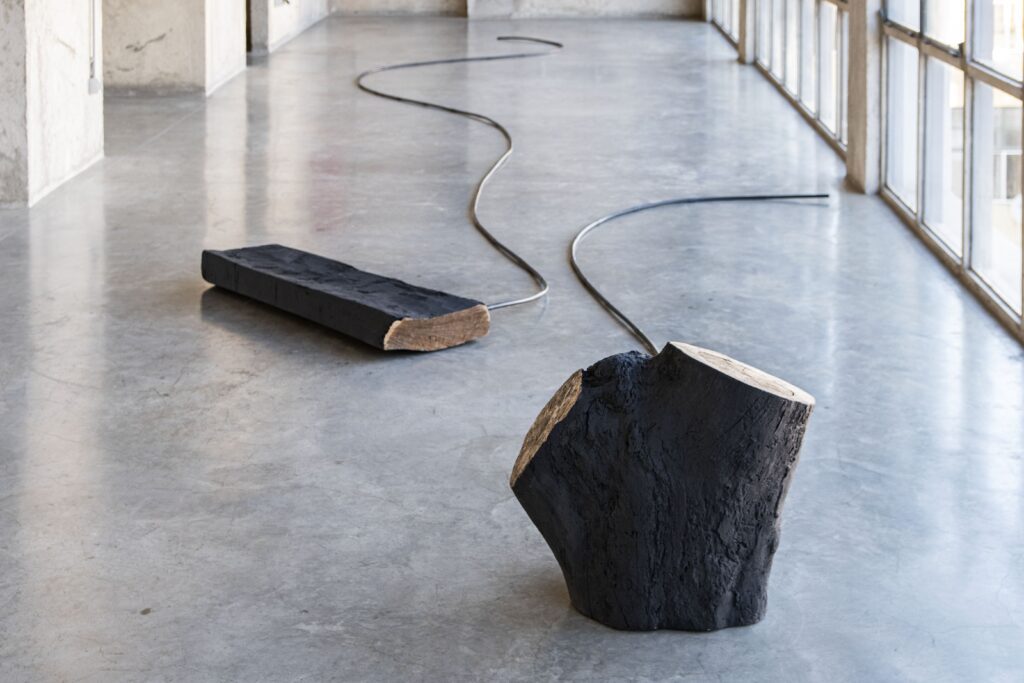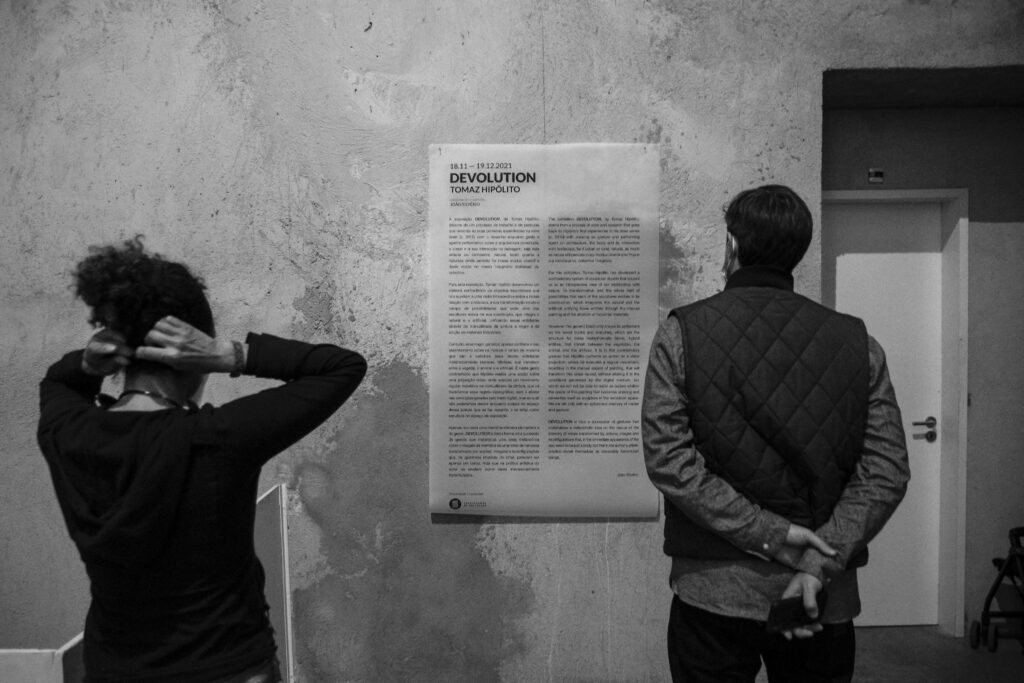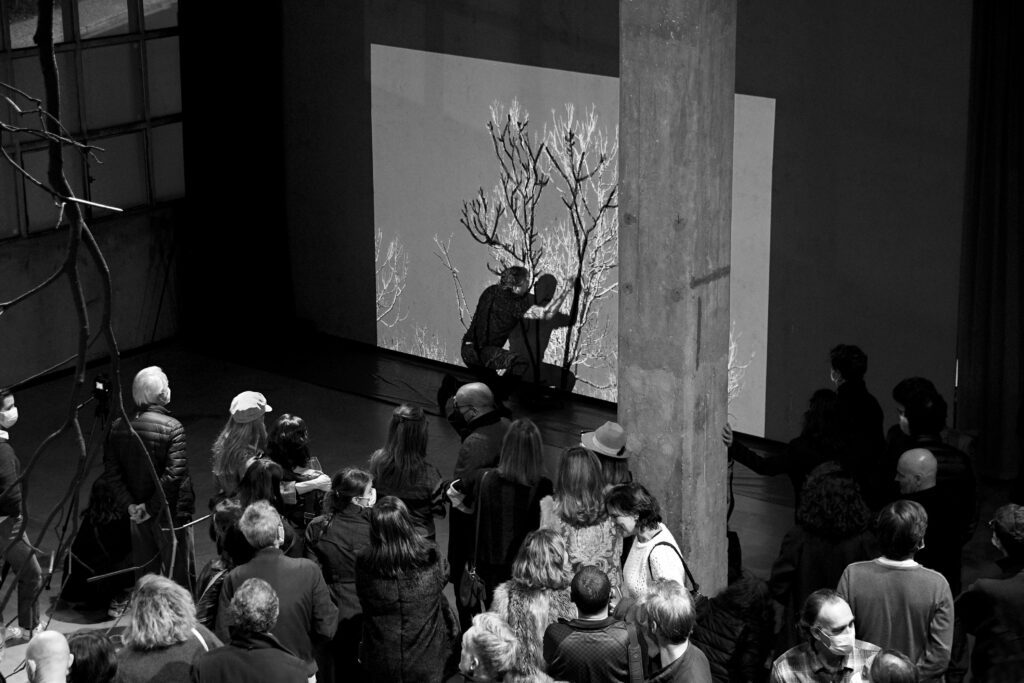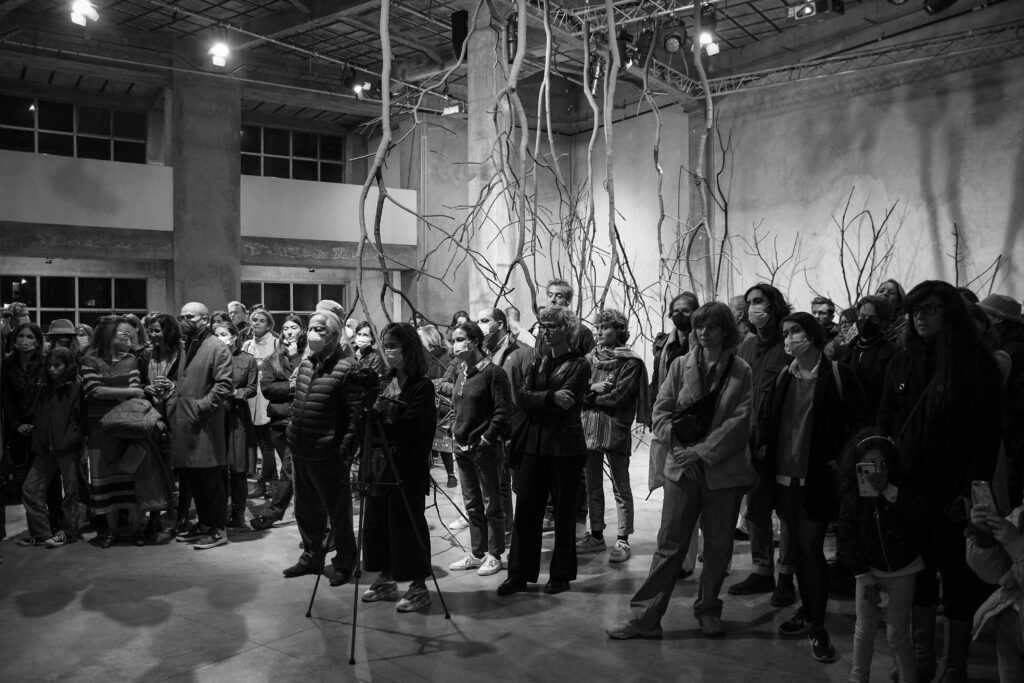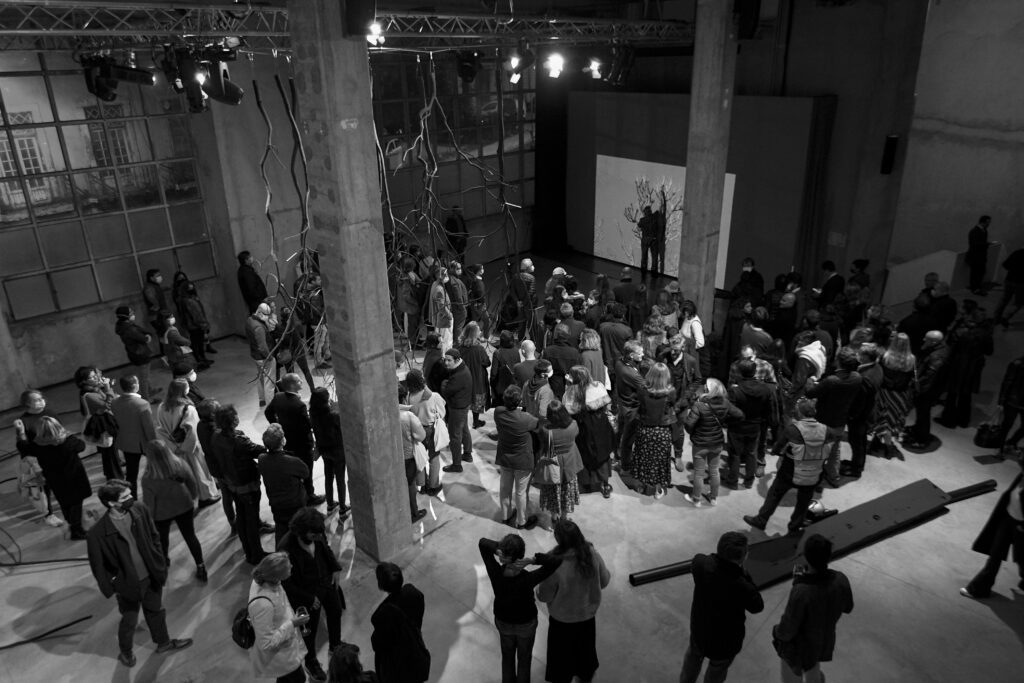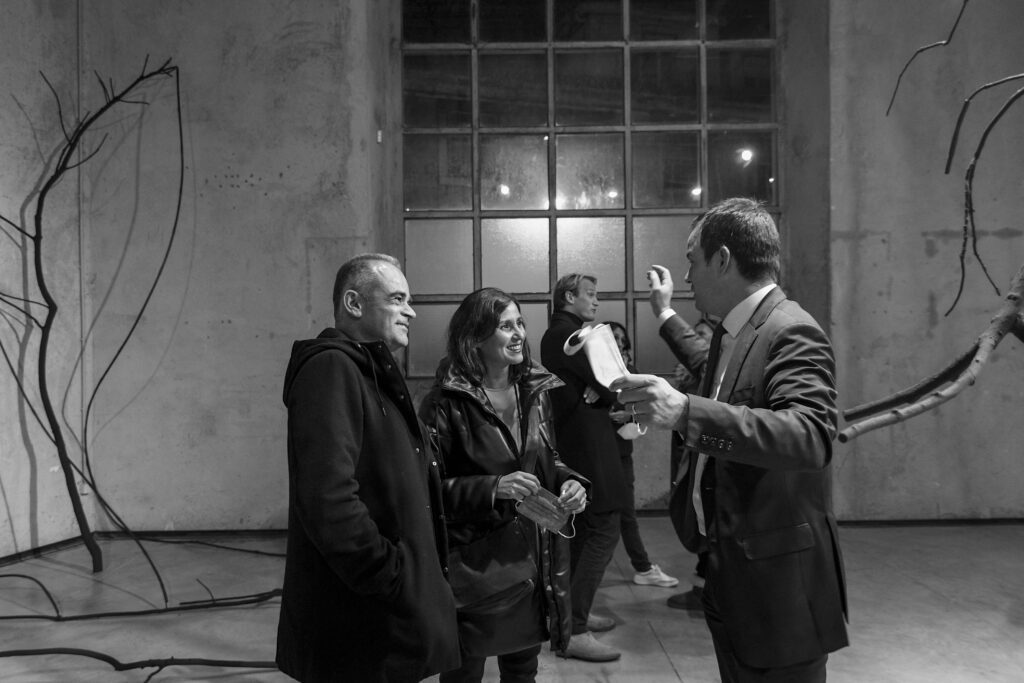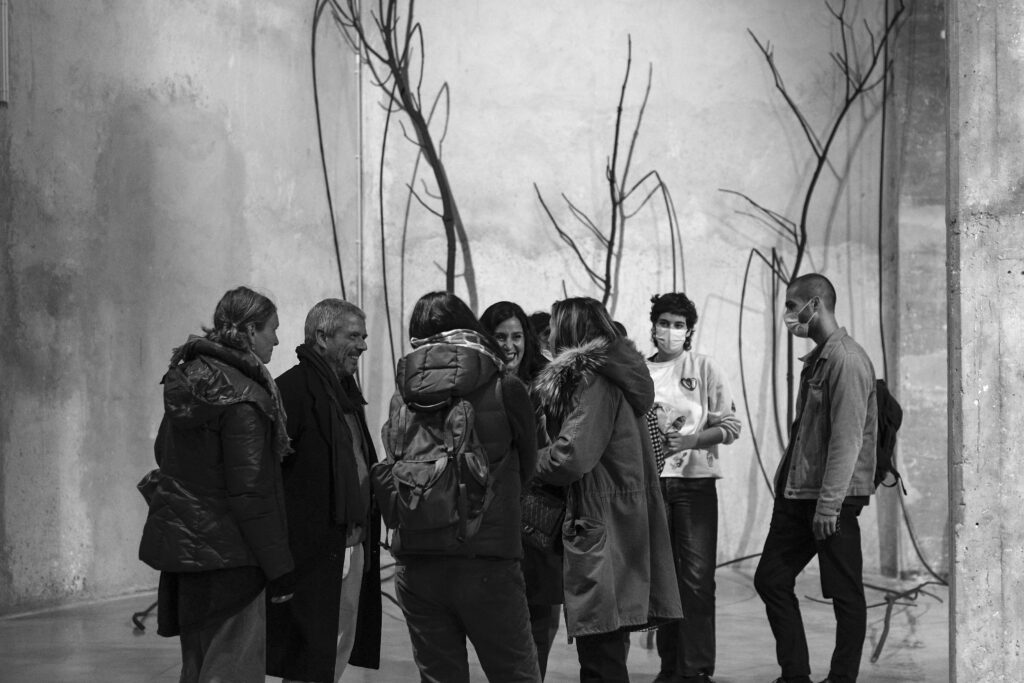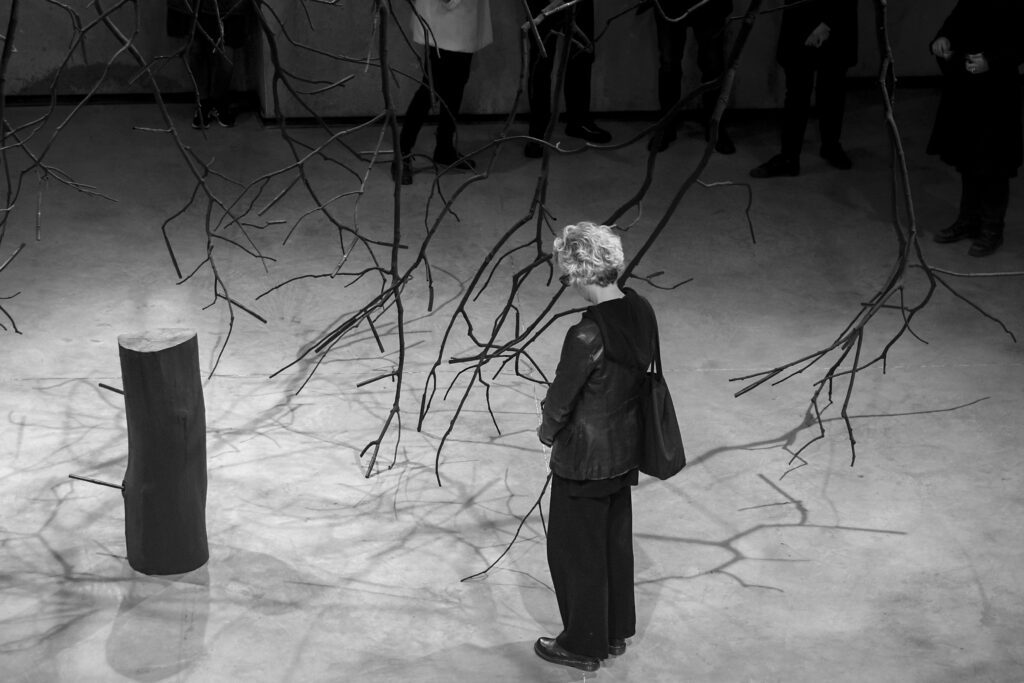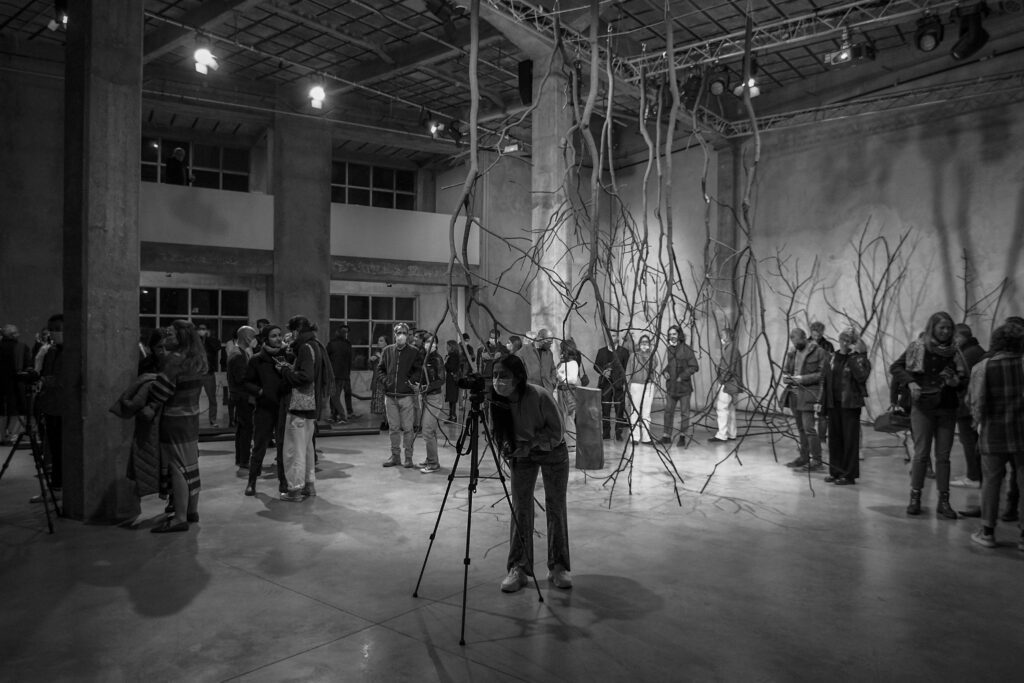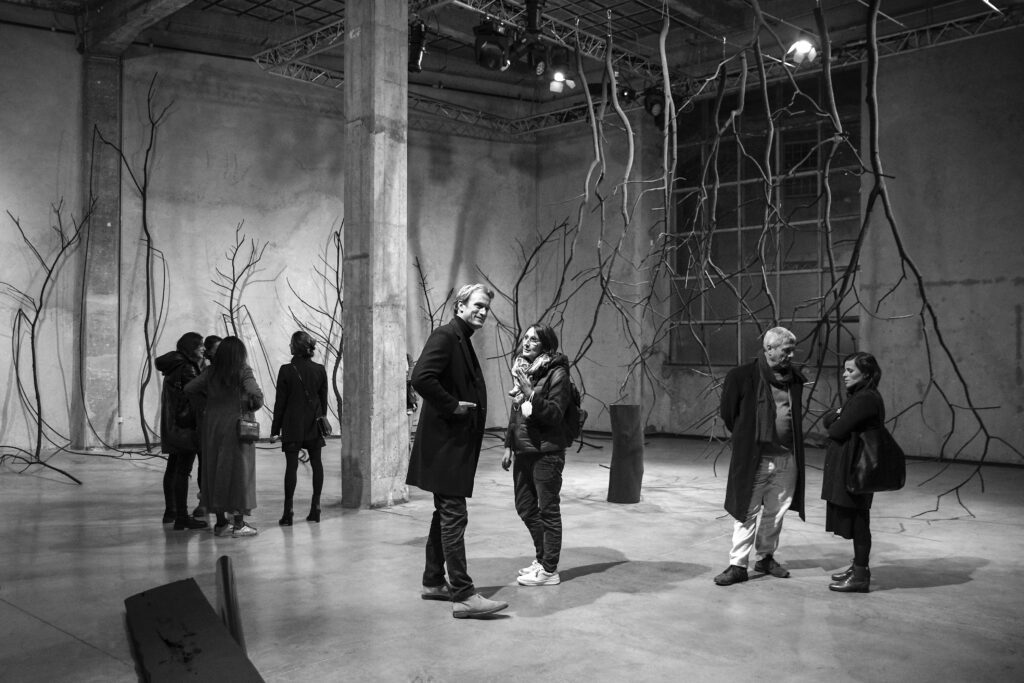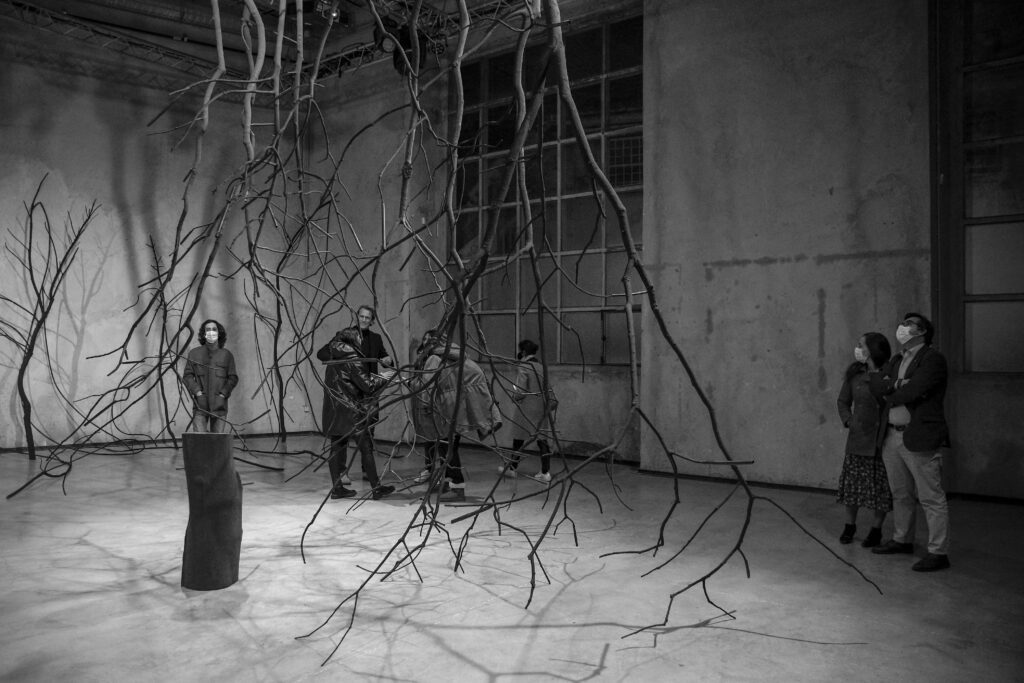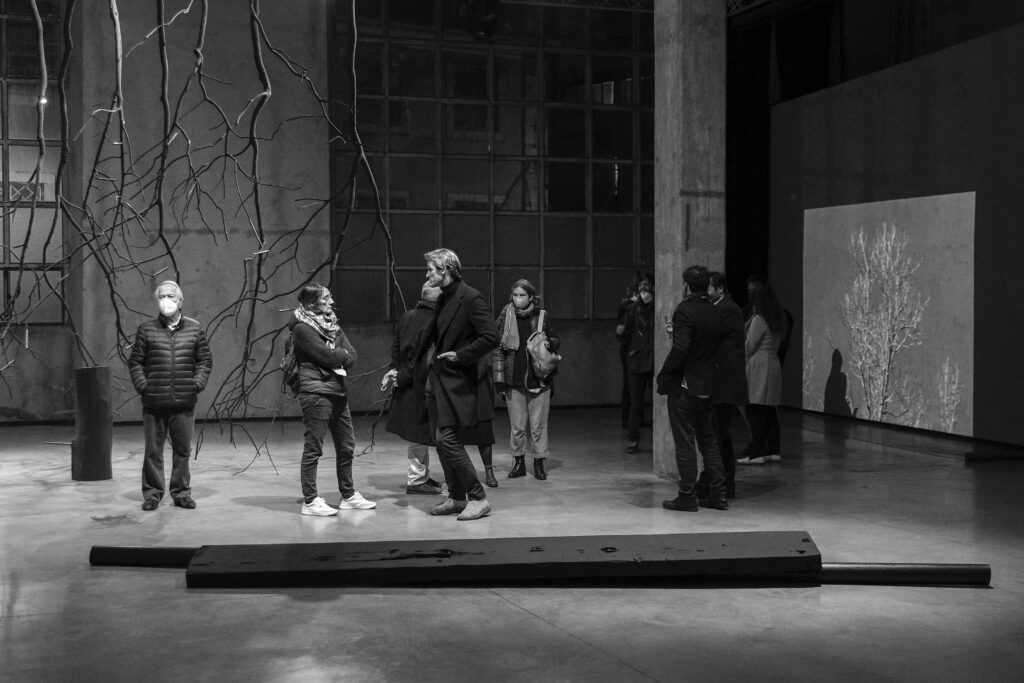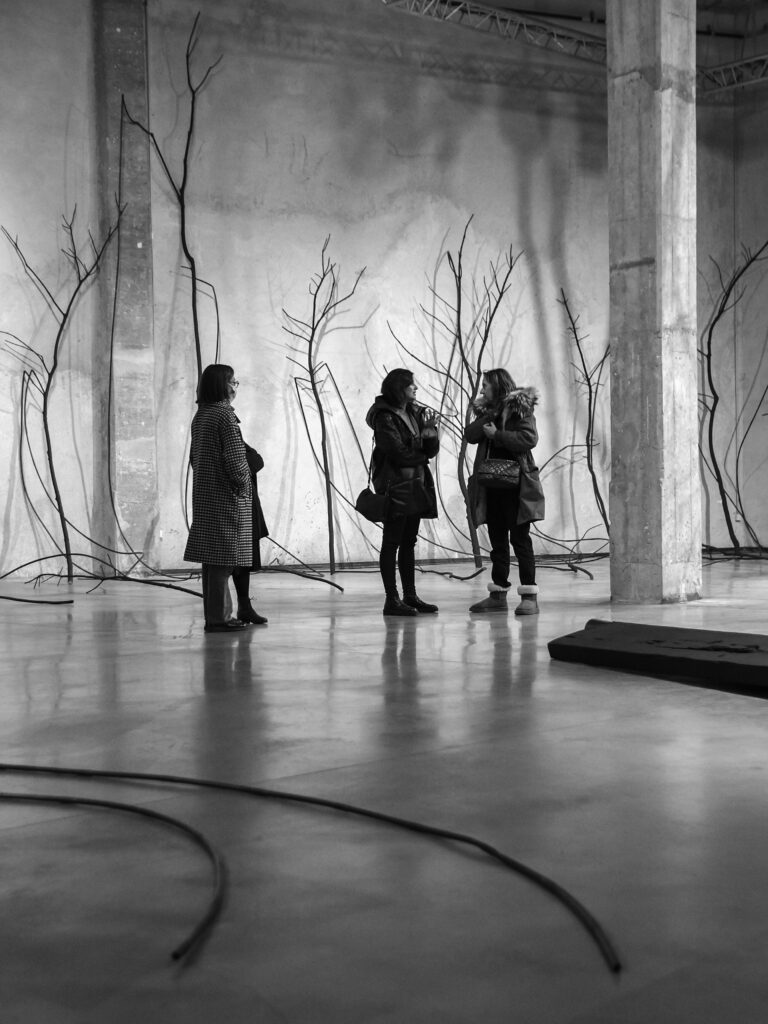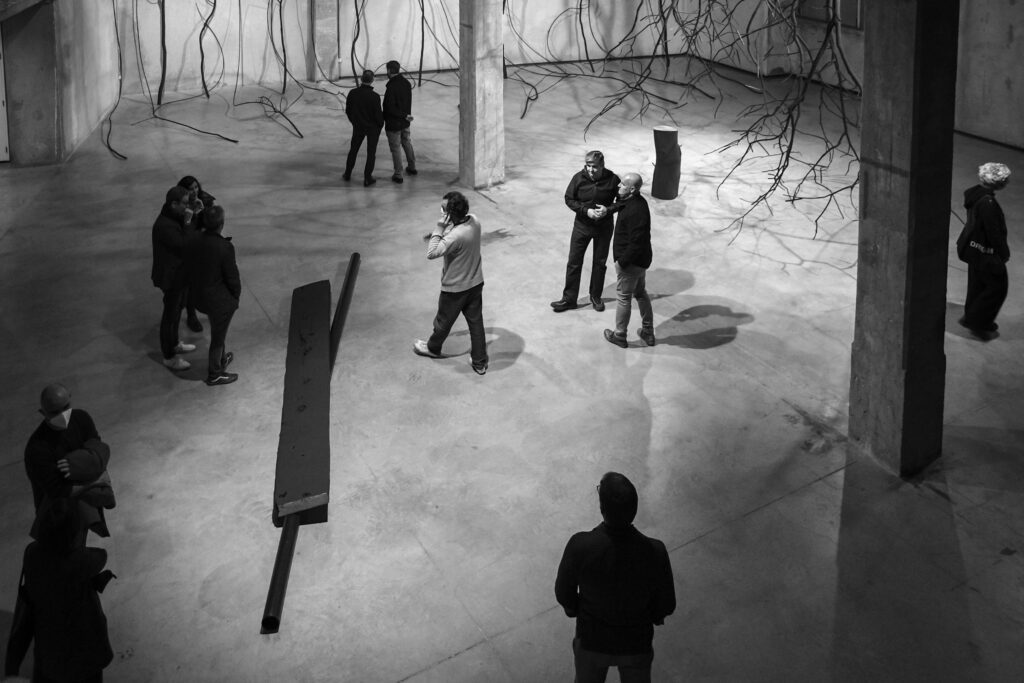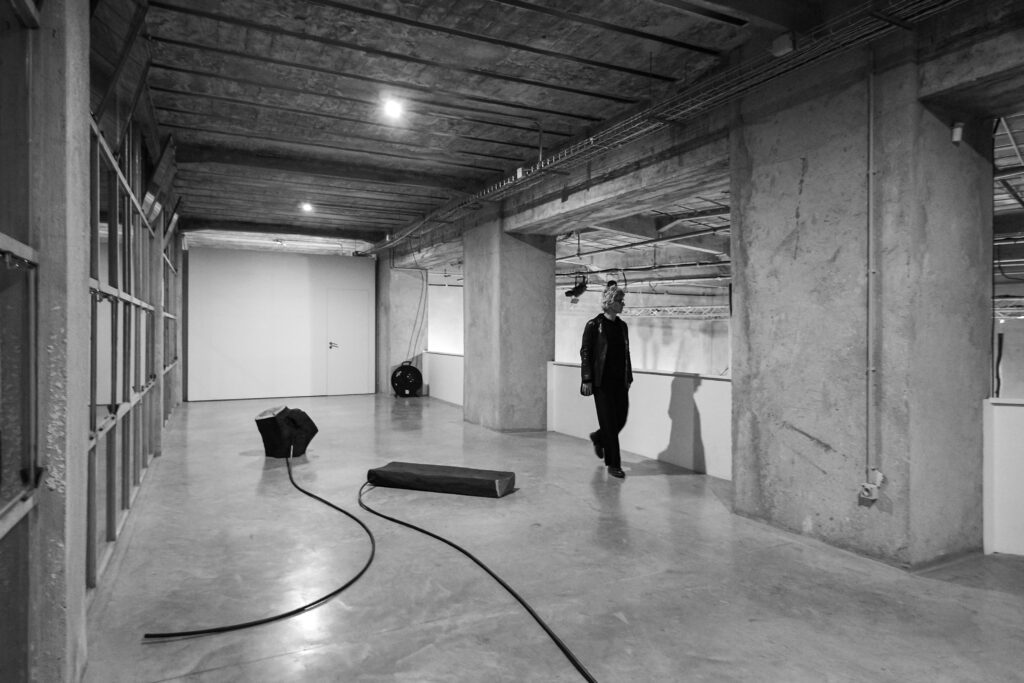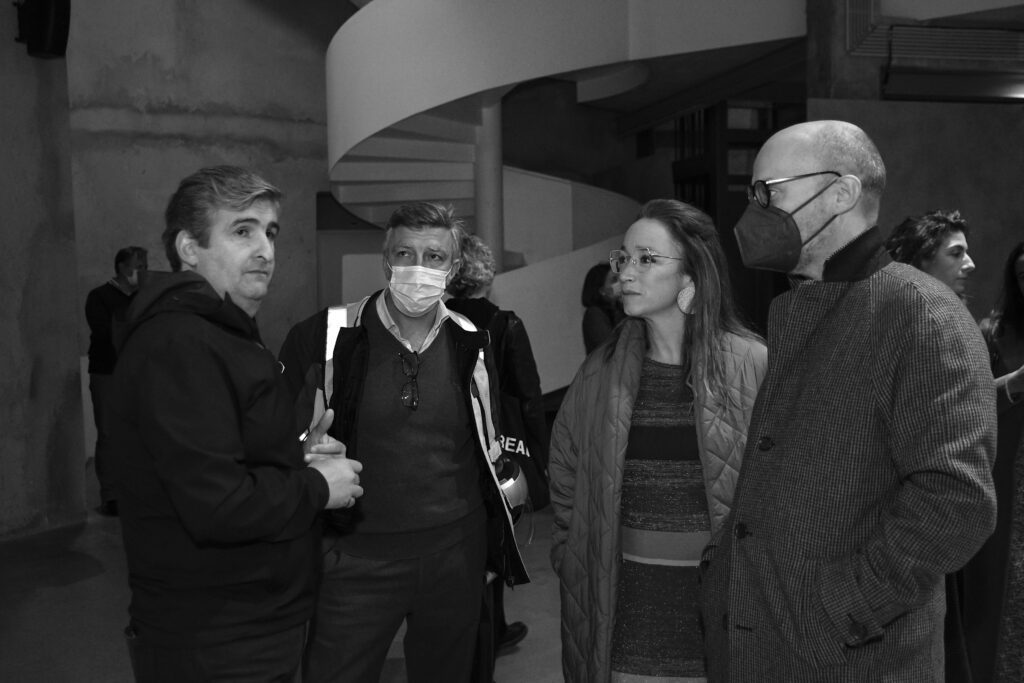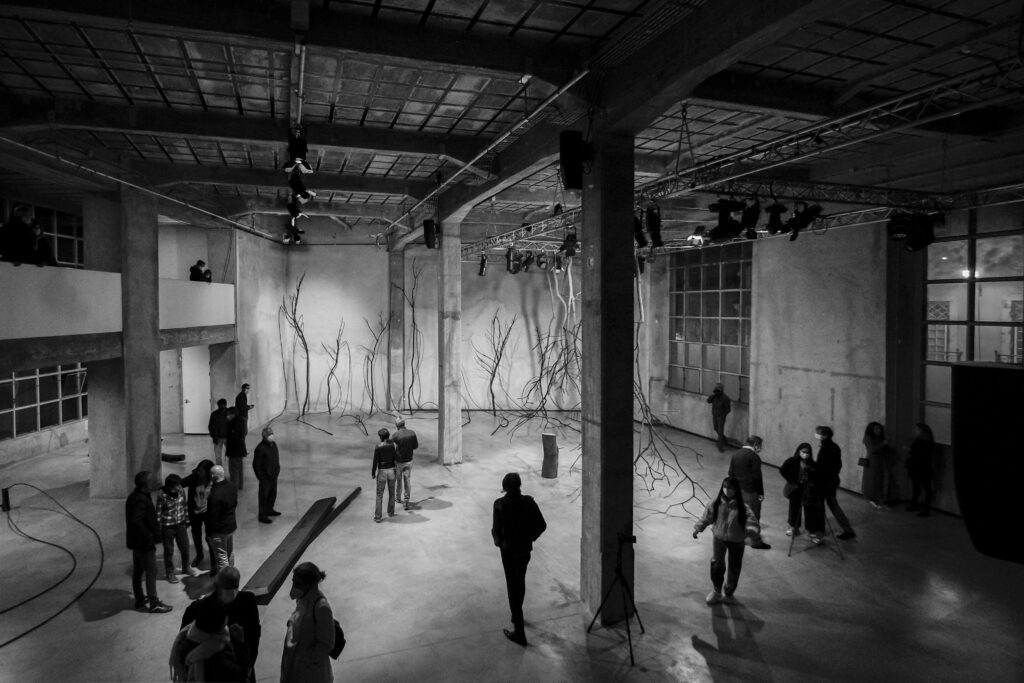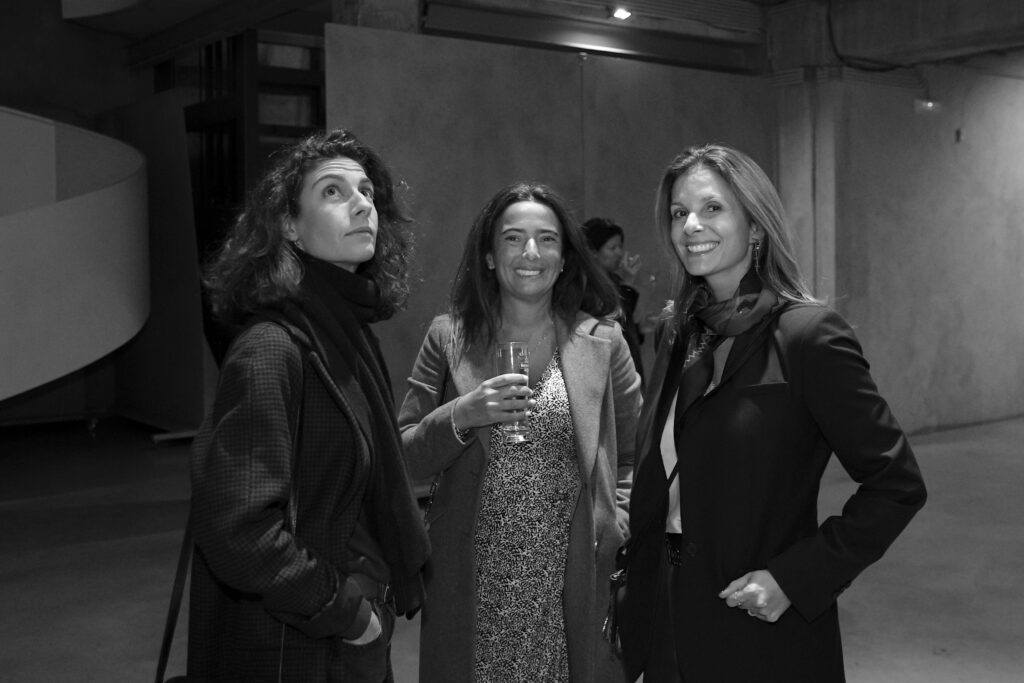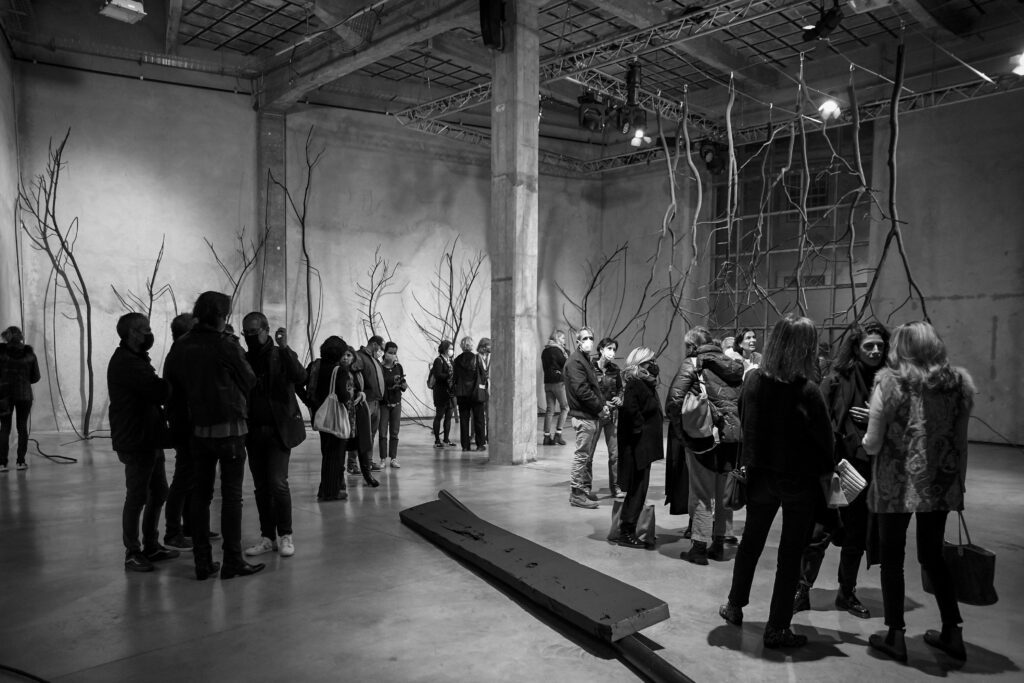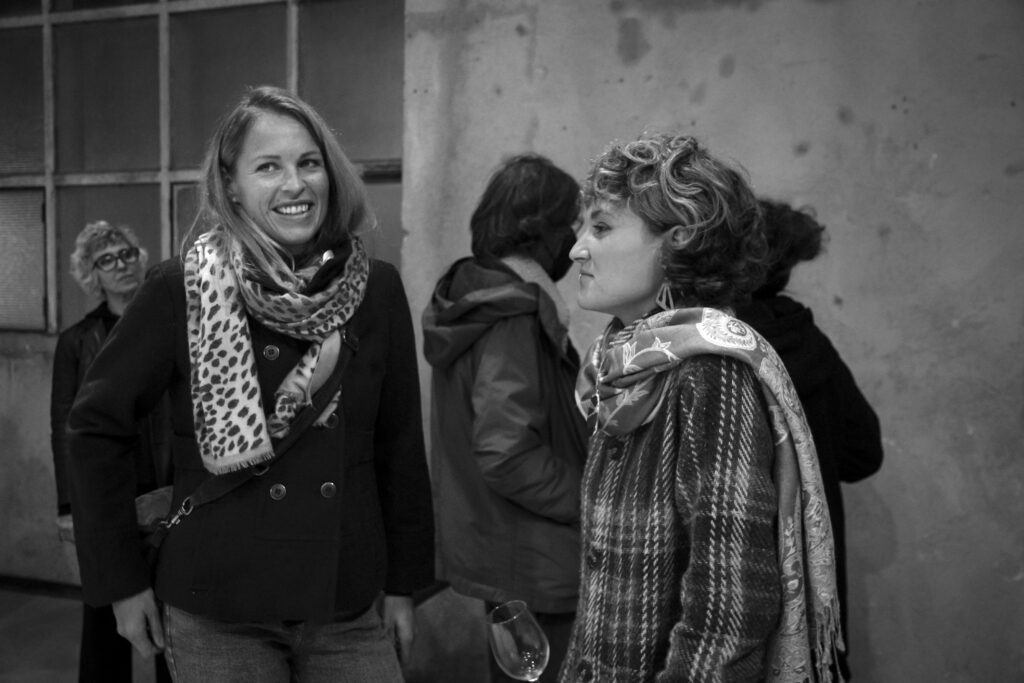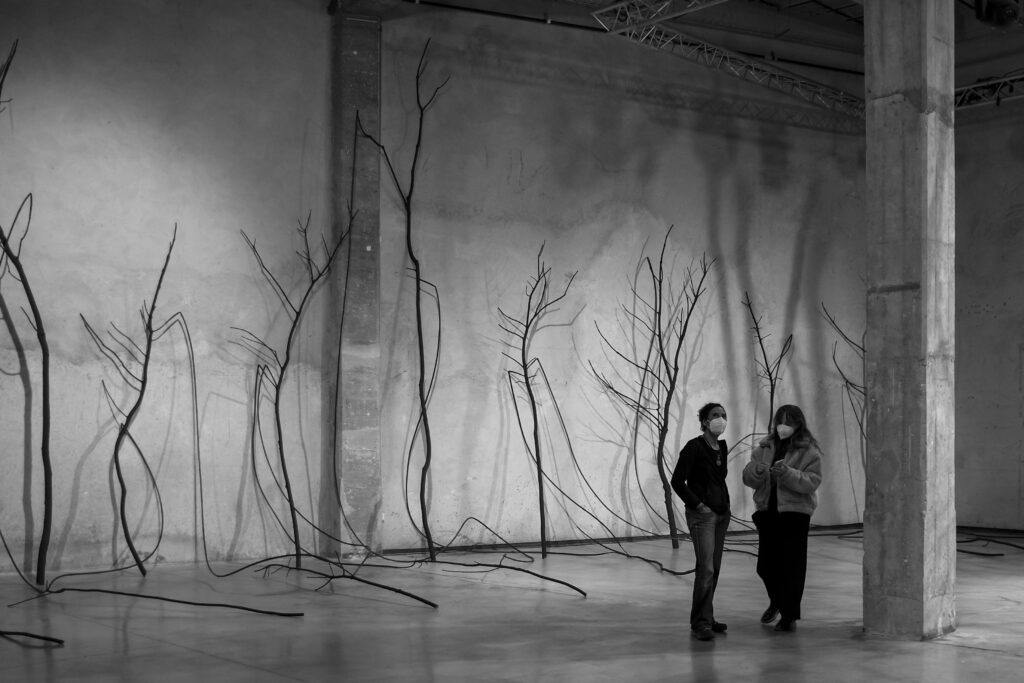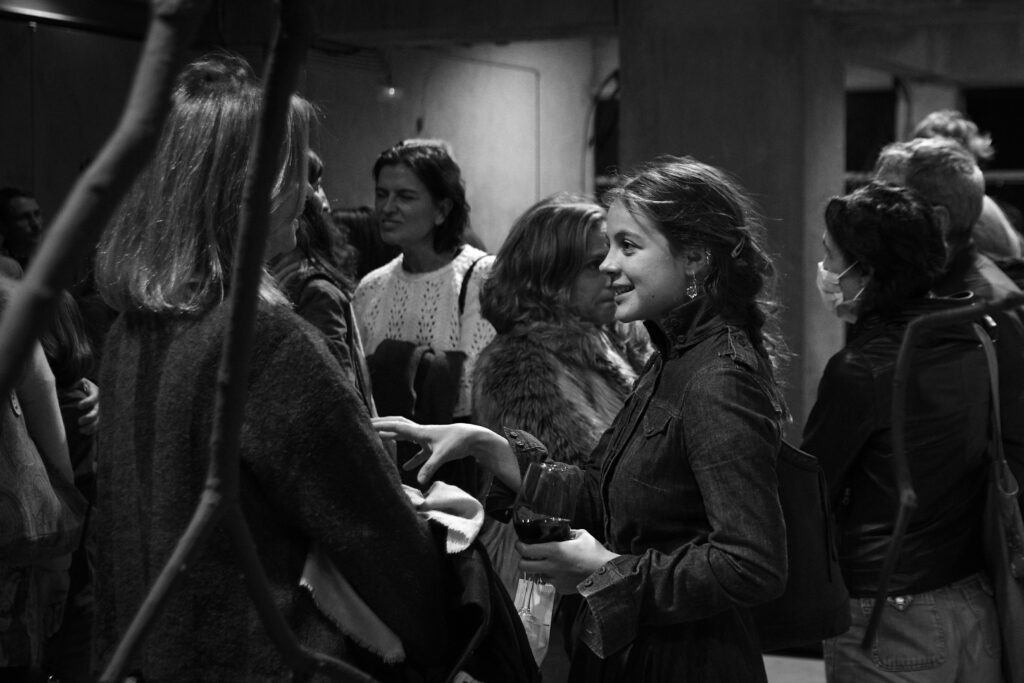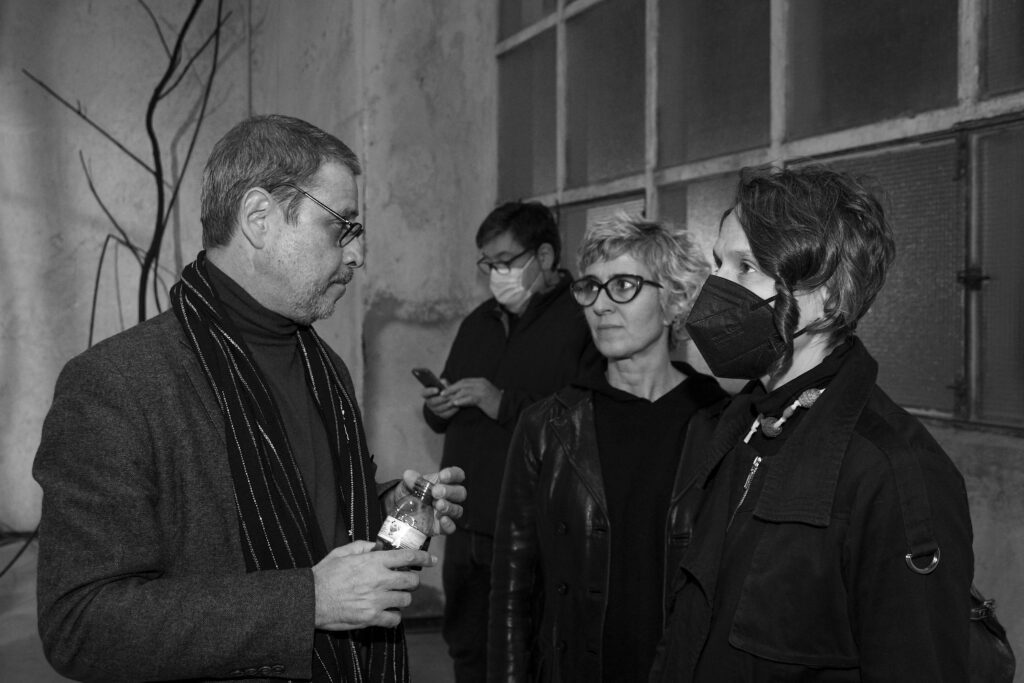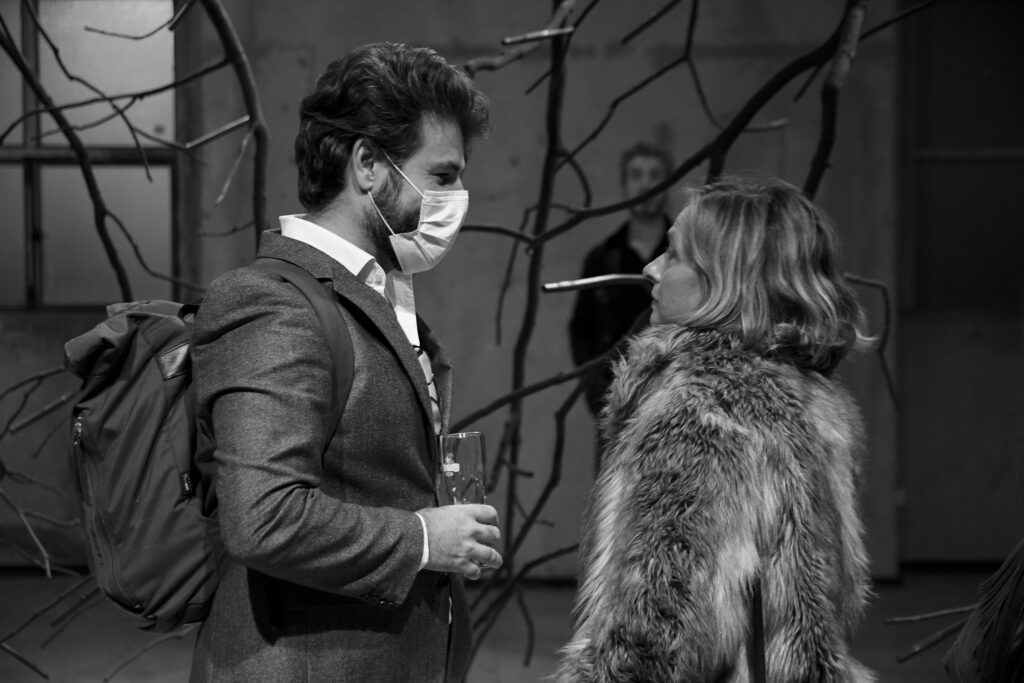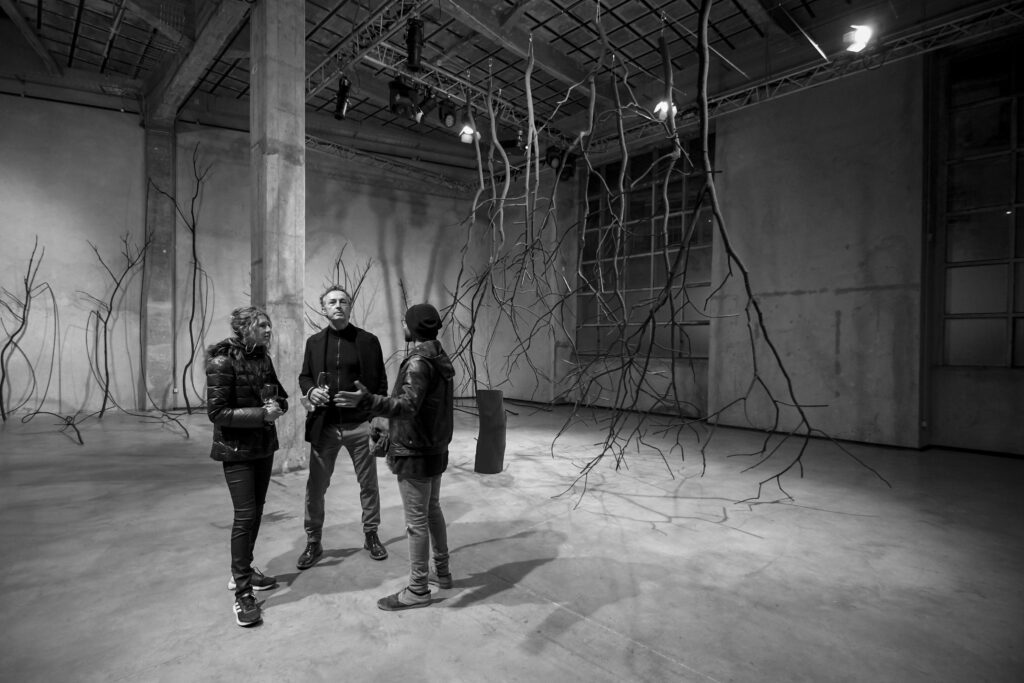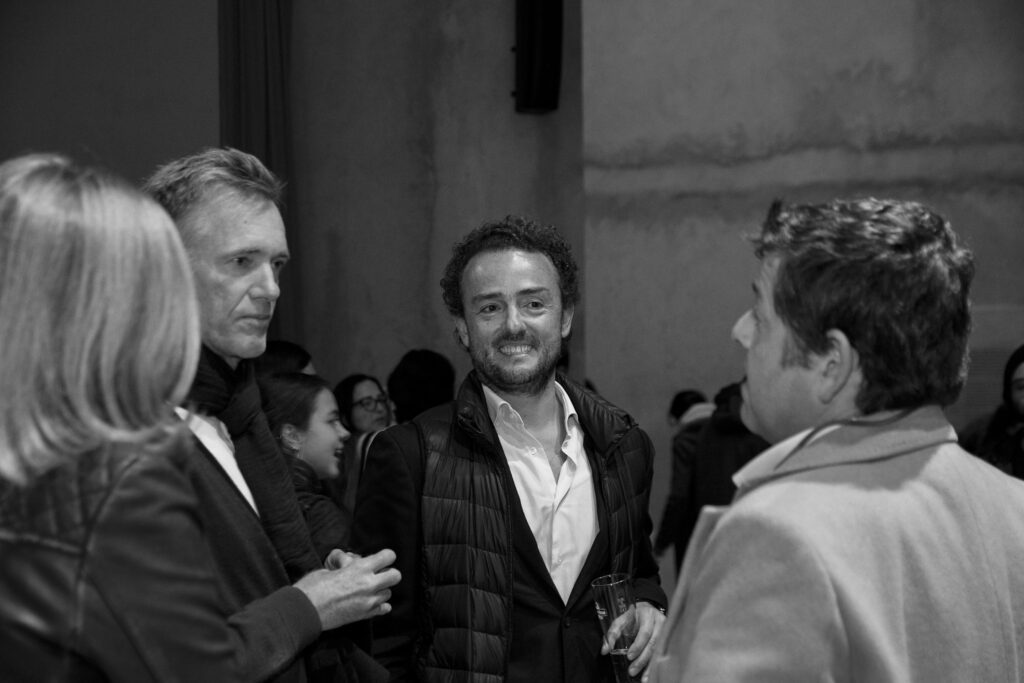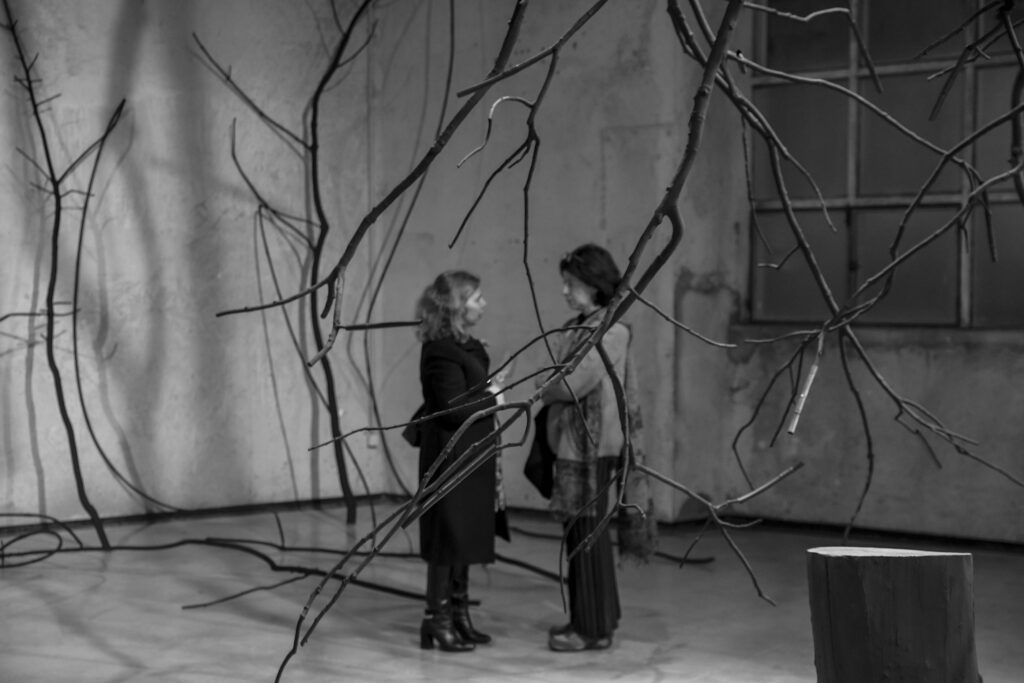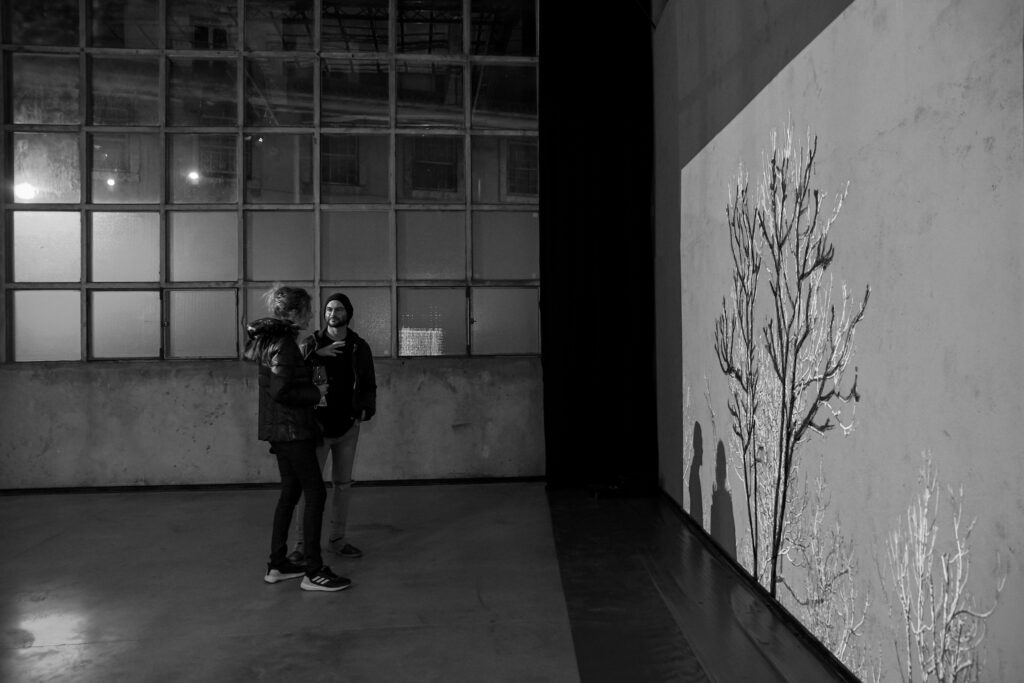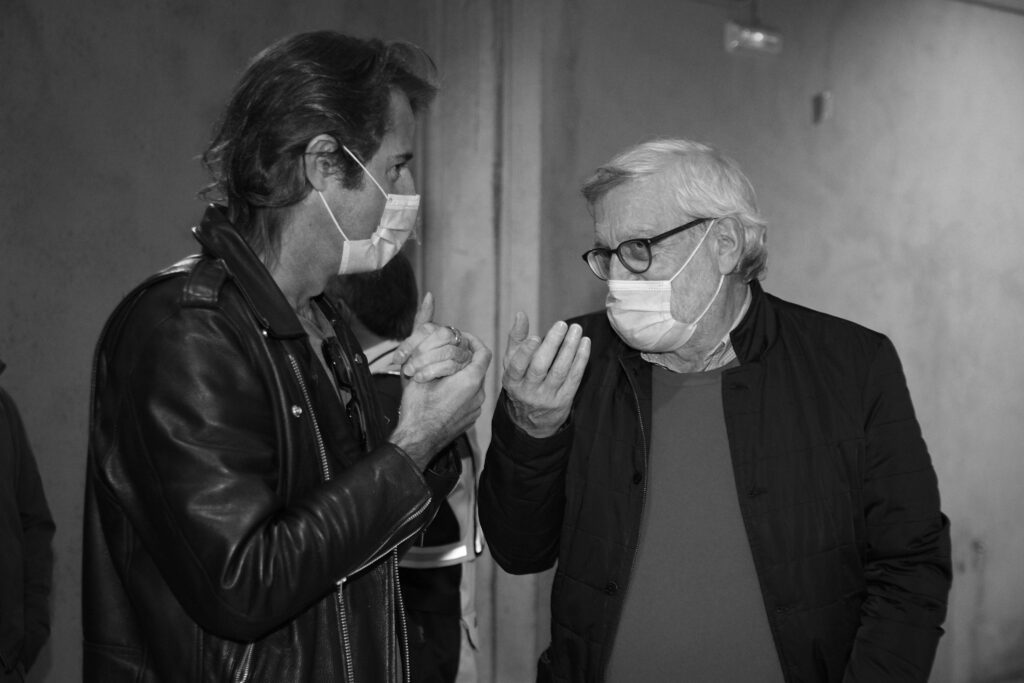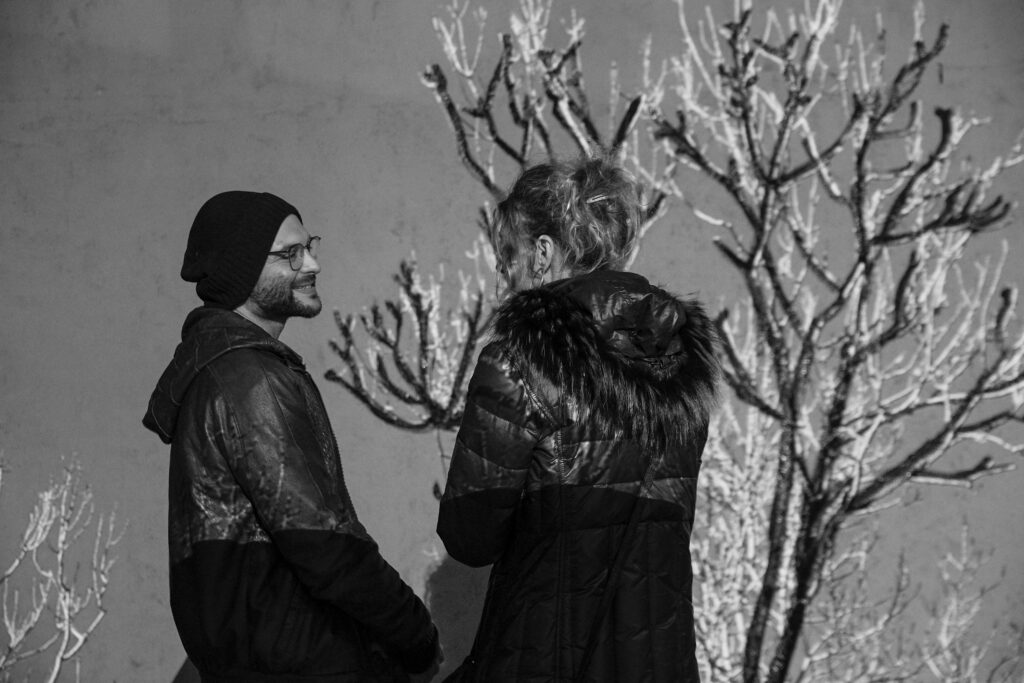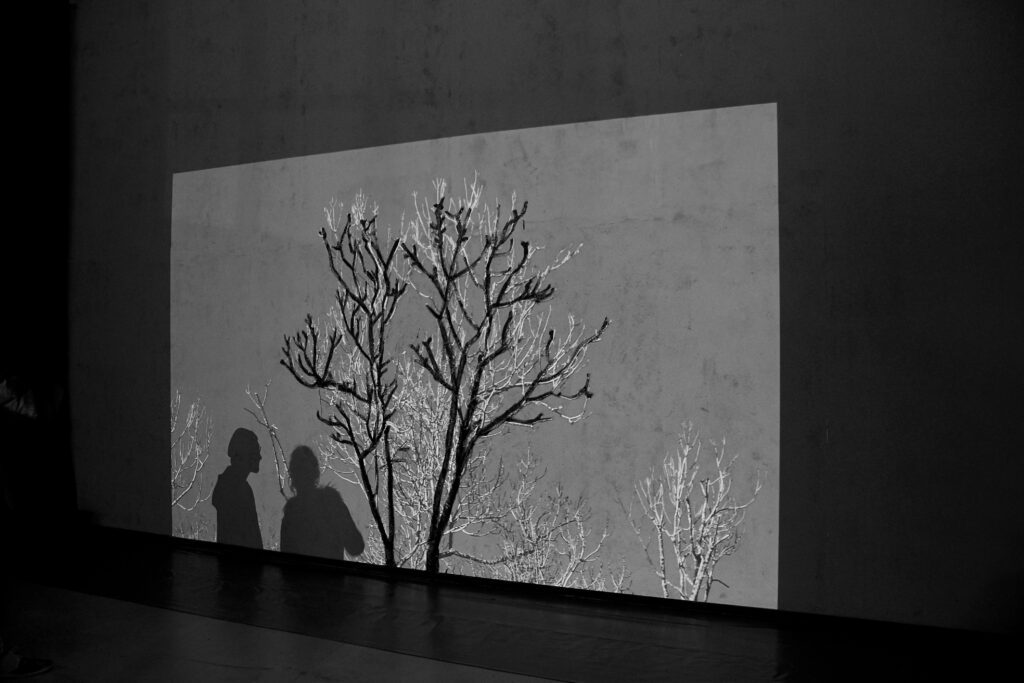2021 Devolution | Carpintarias de São Lázaro, Lisbon
project projectIn Tomaz Hipólito’s work, the draw process has been a constant, being divided into and crossing itself with a diversity of artistic projects, organized by series, even under other designations like map, persona, rebuilt, paper or merge (according to the artist, these English words shouldn’t have quotation marks or italics, therefore more probably being visual designations or signs), which establish a correlate of actions and gestures that combine the relation of the body with several spaces and contexts. This idea of expansion in space relates to another idea present in the artist’s work, a possibility that is experienced in each moment of his work: the idea of Interval, of time and space. Tomaz Hipólito develops a mapping process of memory through an archive consisting of his works, and with their record, the idea of Interval gets materialized, considering the distance between one mark and another, drawn, in space, an object and/or its body. And now we return to the terminology of draw, here drawing being the idea of a gesture, independently of this drawing being connected to a concrete reality, as well as in its dispersion through catalogued and listed spaces, developing an itinerary that expands itself between the urban landscape and architecture, with the possibility of being considered a project, a model, or a maquette, as well as within the construction, lato sensu, in which the artist developed many of his ephemeral actions. This process and procedure called draw confronts us with the paradox of being continuous and uninterrupted at the same time that it incorporates a succession of Intervals within that continuum, without being subjected to cuts, tendencies or memories of other voices. In a way it is like a plan of sequences: when we observe the trajectory of his work, we may find a cinematic reference functioning as a dialectical, and thus speculative, train of thought.
It is on this greater plan of sequences that the exhibition DEVOLUTION proposes several challenges to us. These unfold between the architecture and the patrimonial legacy of Carpintarias that is restored by claiming the memory of the work taking place there, labour with raw materials coming from a natural habitat so close to the tree trunks and branches that Tomaz Hipólito collected in the course of his research, but that were also subjected to a transformation, as in the industrialized aesthetics of Carpintarias. However, this transforming action of the artist did not materialize in objects that are useful or have a domestic purpose, an organized working system, not even a playful or even decorative purpose. Hipólito has developed an almost rhizomatic system, in which the observer’s attention is caught by the memory of the natural archetype that unfolds itself in an artificial drawing without losing, on one hand, its aesthetical plasticity, and on the other, a political reflection, but a quite melancholic one because of the paradox of evolution vs. natural environment. In this moment of his work, we return to his first experiences in the draw series, since 2010, drawing being a gesture and performing agent on built architecture, the body and its interaction in landscape, be it urban or rural, natural, as much as nature still persists in our modus vivendi and thus in our individual and uncontrollably collective imaginary. But we also come back repeatedly to the repetition and transformation of the word, from draw to DEVOLUTION, from the idea of drawing to the reality of the inversion of the term evolution, evolution in a literal sense. This process, close to an iteration, in the sense of a sequence of operations in which an object is the result of a previous act or operation and, therefore a replication that succeeds it but is only similar, a memory being updated and for that, one that reconfigures itself as a recognizable universe within its material limit and thus destined in time to a certain complexity by its different interpretation layers, as well as the interconnection between the series in constant evolution.
For this exhibition, Tomaz Hipólito develops a contradictory system of sculptural objects that subject us to an introspective view of our relationship with nature, its transformation and the whole field of possibilities that each of the sculptures evokes in its construction, which is part natural and artificial, unifying these entities through the stroke of black painting and the addition of industrial materials.However, this generic black only knows its settlement on the wooden trunks and branches that are the basic structure of these bionic entities, in metaphorical terms, hybrids that move between the vegetable, the animal, and the artificial. It is within this contradictory gesture that Tomaz Hipólito performs an action over a video projection, executed with regular movement, repetitive in what concerns the manual aspect of painting, transforming this video record without altering the conditions generated by the digital medium itself, but to which we will not be able to resist as bodies in this space of painting that becomes drawing and reinvents itself as sculpture in the exhibition space, as ephemeral remains of matter and gesture. DEVOLUTION is thus a succession of gestures that materializes a reflexive attitude by rescuing an idea of nature as a memory transformed by actions, images and reconfigurations that in the immediate appearance of the viewer make up one body; however in the author’s artistic practice they reveal themselves as other entities, of a still unpredictable and irreversibly transmuted nomination.
João Silvério
